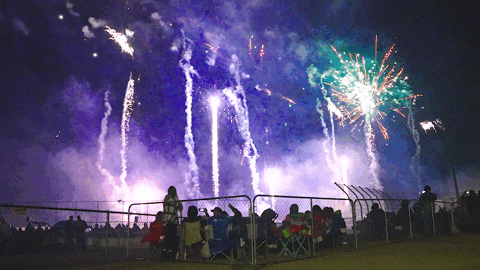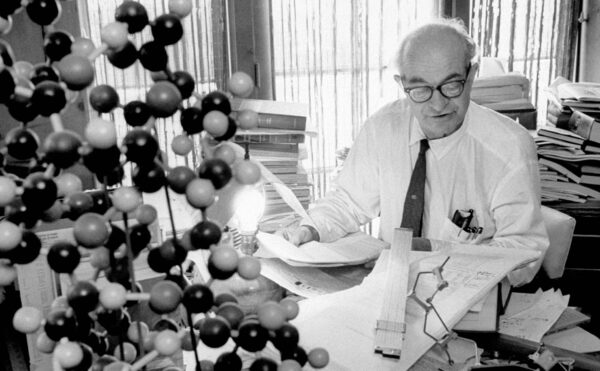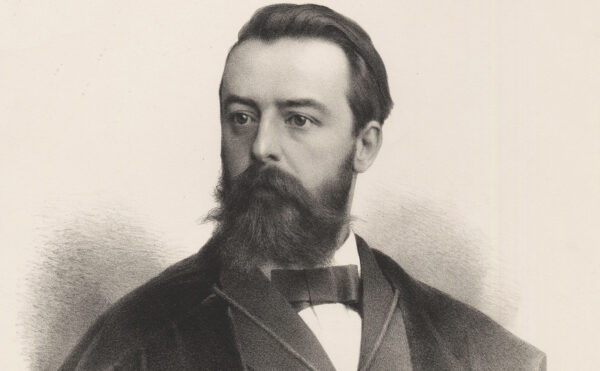Every February the Western Pyrotechnic Association holds the Western Winter Blast in the Arizona desert. The 34th edition of the event attracted the full spectrum of firebugs, everyone from the technicians responsible for Super Bowl displays and Hollywood special effects, to mom-and-pop retailers and retirees who arrived by RV to grill and watch the show.
“Pyro brings people together from diametrically opposite ends of the scale on religion and politics and philosophy,” said Tom Calderwood, a photographer who made the trek from Piney Flats, Tennessee. “We all have this singular love for pyro.”
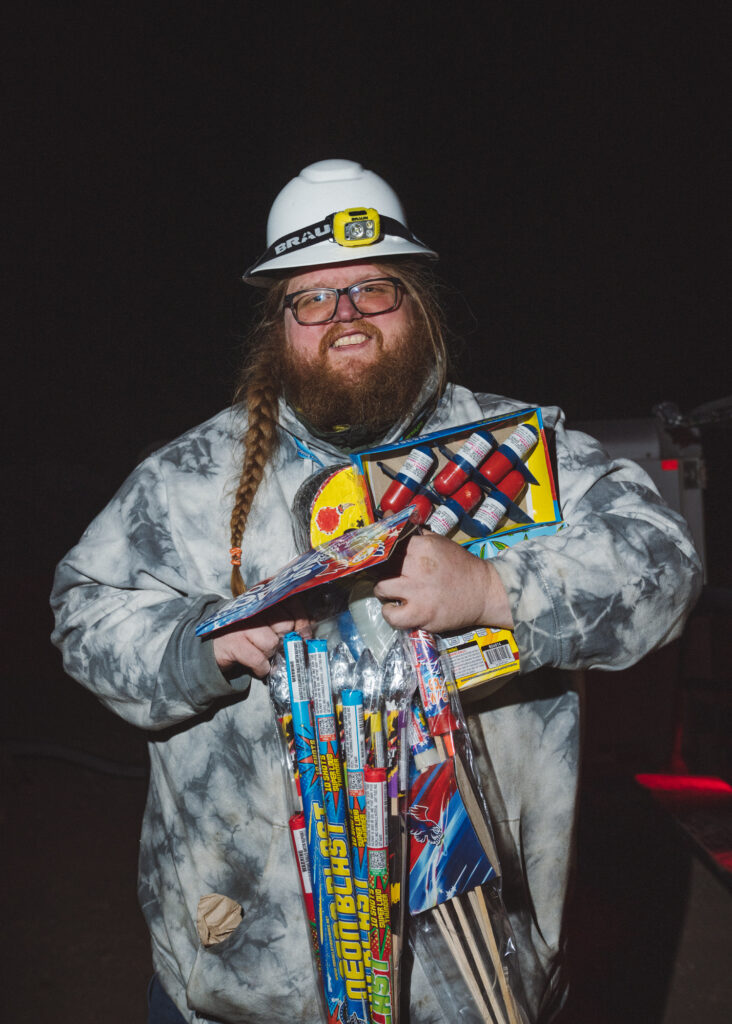
The reverence for blowing stuff up goes back millennia, to the alchemists of China’s Tang dynasty. The history of alchemy is full of men who searched for eternal life and instead found new and innovative agents of death. Poisons, such as arsenic trioxide, were often the yield, but Wei Boyang, created something decidedly different when he combined charcoal, nitrates, and sulfur to make a strange, dark substance that would “fly and dance” through the air in violent convulsions, as he wrote in 142 BCE. His invention, gunpowder, would lay the groundwork for modern warfare and cause centuries of untold human devastation. It would also give us fireworks.
Initially, fireworks weren’t much more than gunpowder packed into hollow tubes of bamboo that would ignite when thrown onto flames. They were used both for celebrations and religious ceremonies, a dramatic weapon to ward off evil spirits. By the 1600s, fireworks displays had matured into something closer to the pyrotechnics seen today, although they were significantly more dangerous. Shows were conducted by “green men,” who would cover themselves with wet leaves to avoid catching alight as the rockets launched. Their job was to entertain the crowd, wrangle the fireworks, and maintain order; in the course of their work these men were often brutally wounded. Their strange outfits and flirtation with danger cast a supernatural air on the daredevils, who formed a loose fraternity that persists today. Pyrotechnic enthusiasts still salute each other with the customary greeting, “stay green.” Green men weren’t the only ones fireworks put in peril. Haphazard explosions in ancient China and chaotic fireworks factories in Victorian London set off conflagrations that consumed entire residential blocks.
But that danger did not impede fireworks’ popularity. As they spread out of China, pyrotechnic schools popped up across the European continent. Italian manufacturers began experimenting with adding traces of metals to transform the standard orange flames into spectacular colors—strontium created red flames; barium made them green; and copper produced a blast of blue.
“It was strange to believe that so fierce and ungovernable an element as fire could be rendered so delicately obedient to the will of men,” wrote an awestruck Henry Tyrell in 1856 as he watched a London display celebrating the end of the Crimean War.
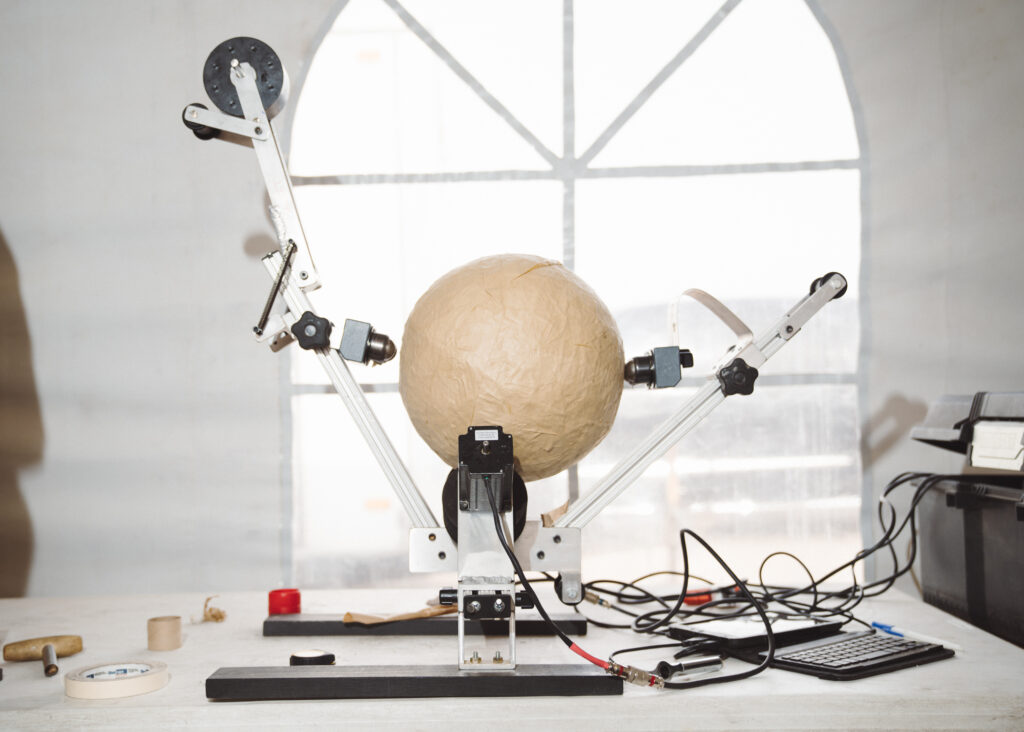
Fireworks shows have since become commonplace; elaborate, highly choreographed, and expensive affairs. (The bill for the District of Columbia’s 2019 Fourth of July celebration reached a whopping $13 million.) And, of course, bigger is better. Cities around the world vie to have the longest show or most shells shot off per minute. The world’s largest firework, weighing more than a ton, was set off in Steamboat Springs, Colorado, in 2020.
As one might expect, there’s an environmental cost to blowing up thousands of pounds of indeterminate material. Studies have shown that fireworks shows cause significant ecological damage—disrupting wildlife migration and reproduction, releasing hazardous metals and particulate matter into the air, aggravating the health problems of vulnerable populations, frightening animals, and contaminating groundwater.
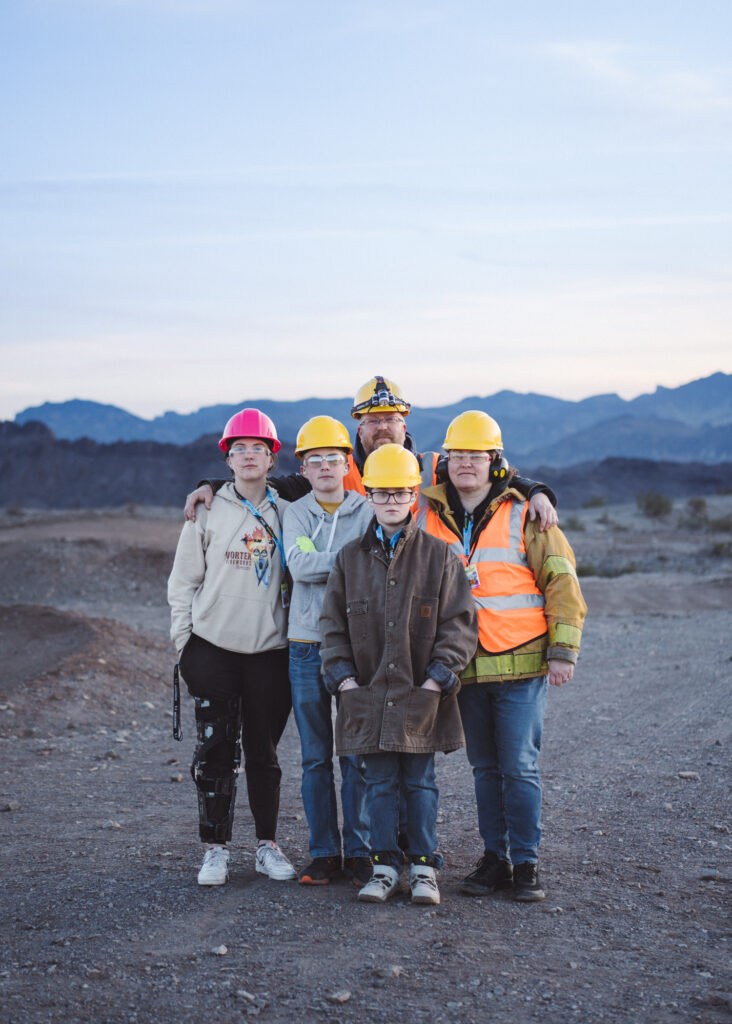
Environmentalists have called for more eco-friendly alternatives, such as replacing traditional fireworks with light-up drone displays. Pyro enthusiasts insist that drones simply lack the emotional impact of good, old-fashioned explosions, but their opponents are skeptical.
“Traditions are wonderful to have, however, we are developing new ways to have these celebrations,” Chris Fisher, a wildlife biologist, told CBC News in 2019. “As we continue to have greater and greater value for our natural inhabitants and neighbors, we should be exploring all options.”
It’s a compelling argument, but it’ll be a tough sell with the pyrotechnic crowd. Even today, there is a lawless, DIY ethos among fireworks most fervent enthusiasts.
Collin van Uchelen traveled all the way from Vancouver to witness the Winter Blast’s displays, even though he is legally blind. As the shells exploded in the winter chill, a companion used a finger to trace their arcs and curls on his back. “I have a little bit of light perception,” said van Uchelen, “I’m not here because I’m blind, it’s because I love the art. I just happened to go blind in the meantime, which is totally inconvenient. But I still love fireworks. It’s all about a way to stay connected with the light.”
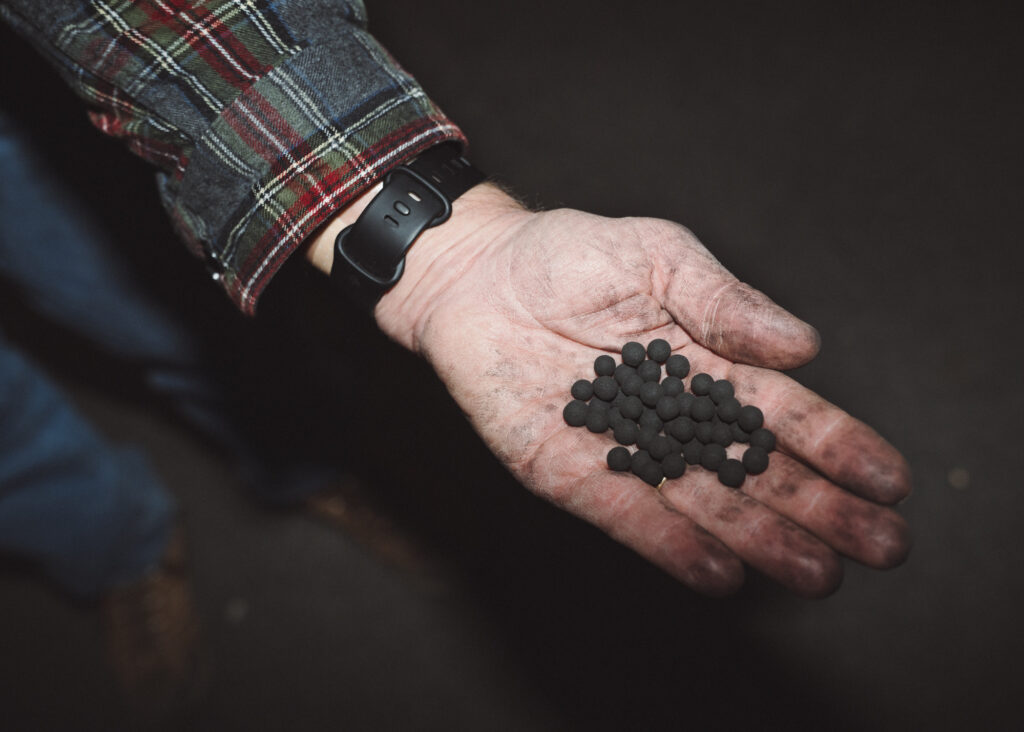
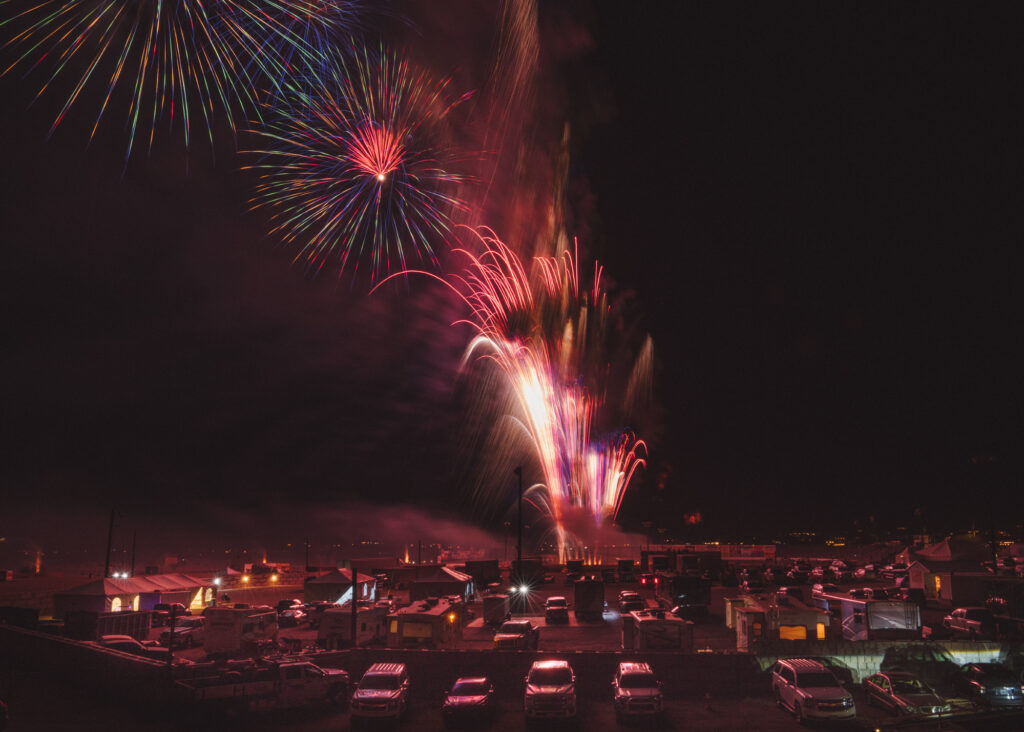
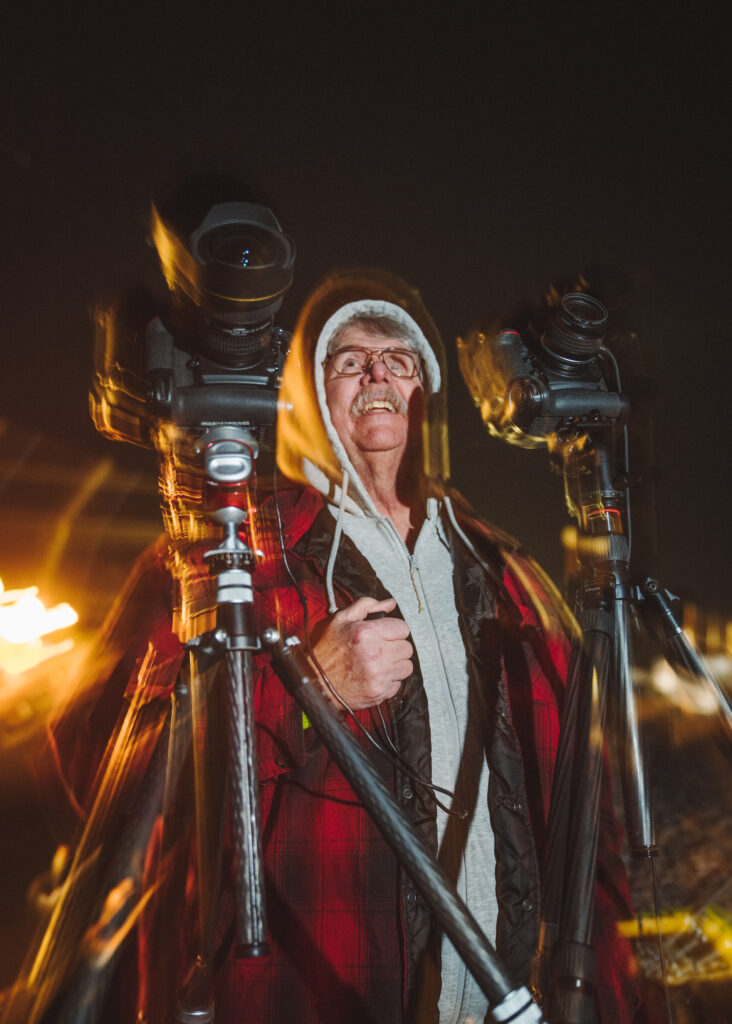
Explosives are there to separate things into their primary components—make little rocks out of big rocks. Pyrotechnics is like art. You combine that visceral, sudden release of energy into this incredibly beautiful, colorful display.
Tom Calderwood, fireworks photographer, Piney Flats, TN
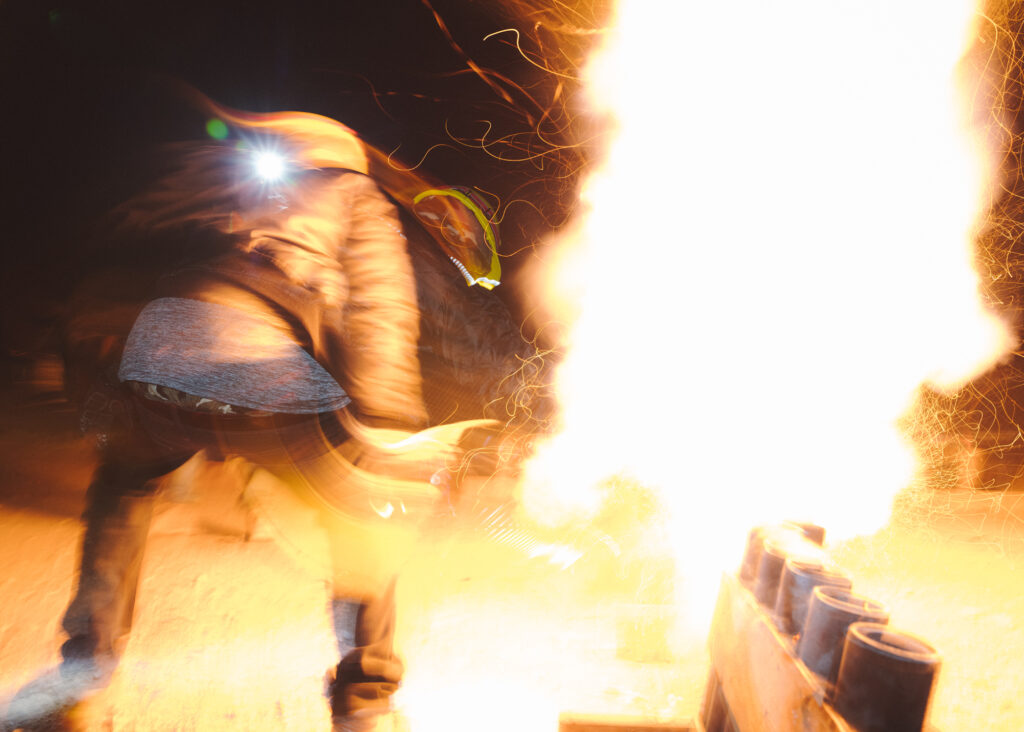
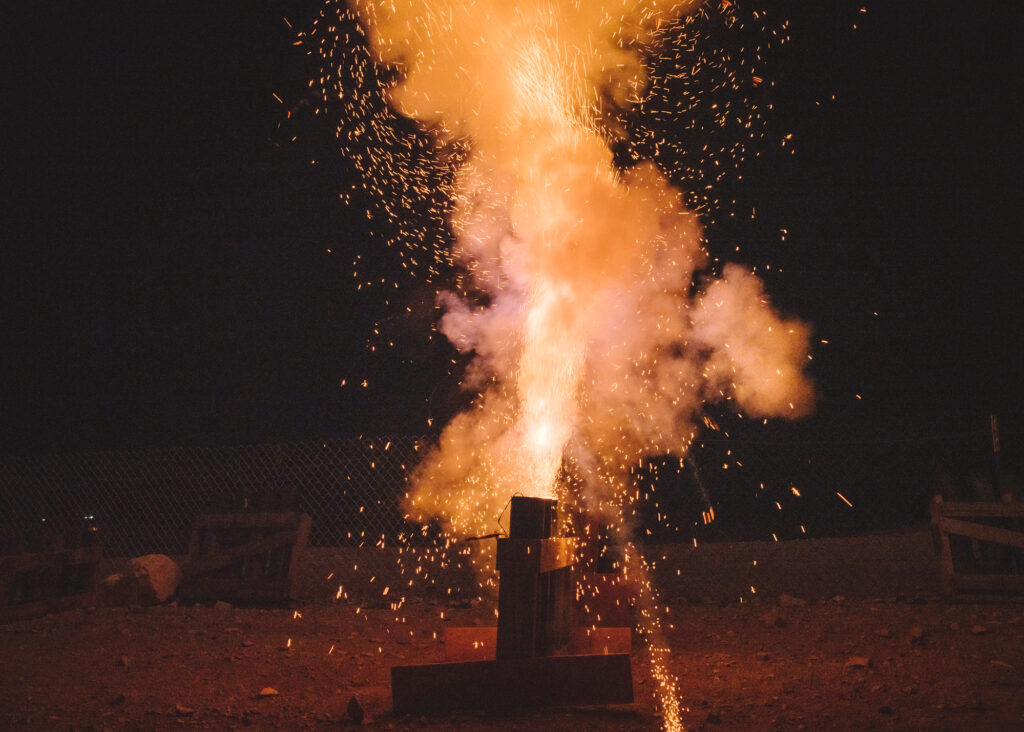
There’s this perception of people that put these events together that “they’re a danger to society.” They don’t want these people close. And what we’re saying is, “No, these are people you need to be friends with!”
Tom Calderwood
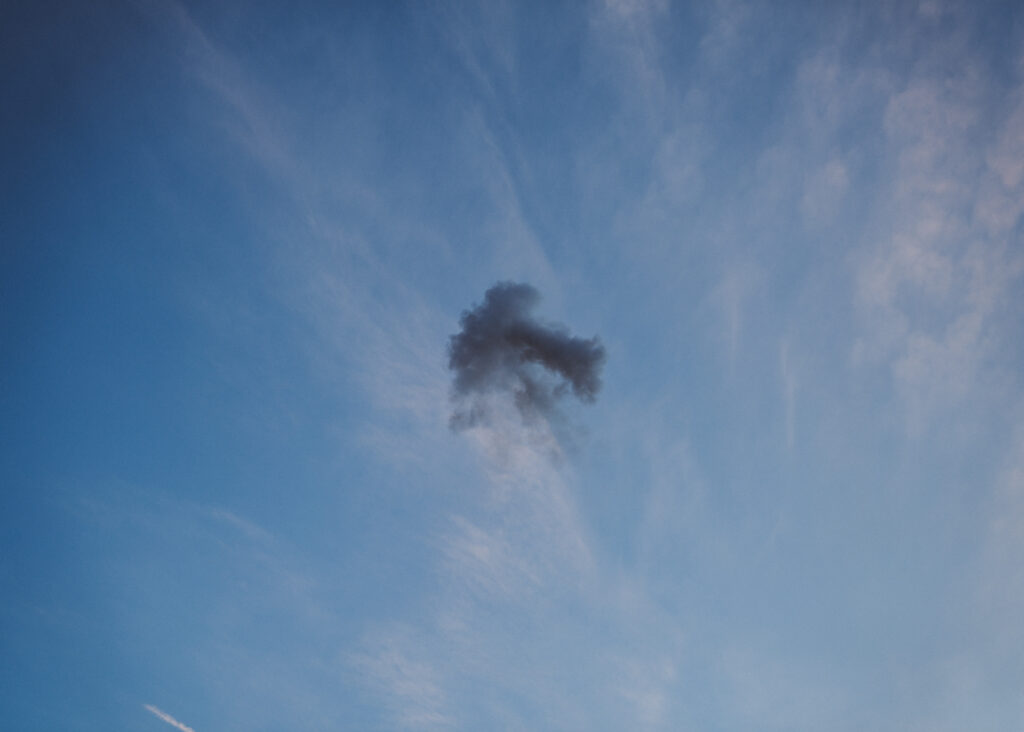
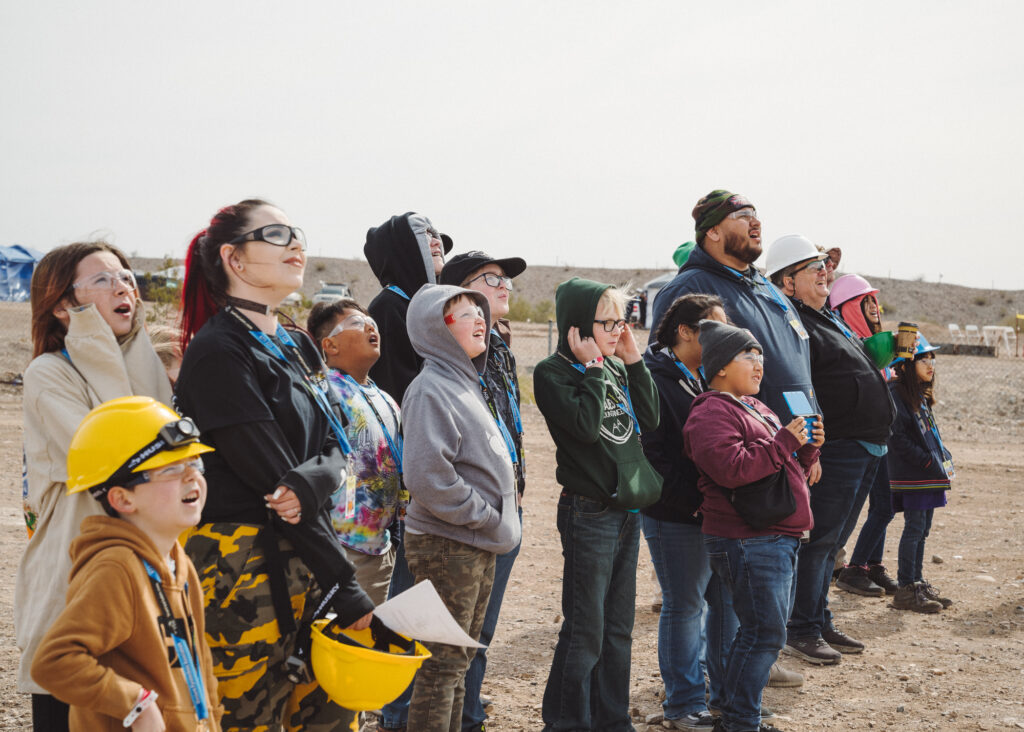
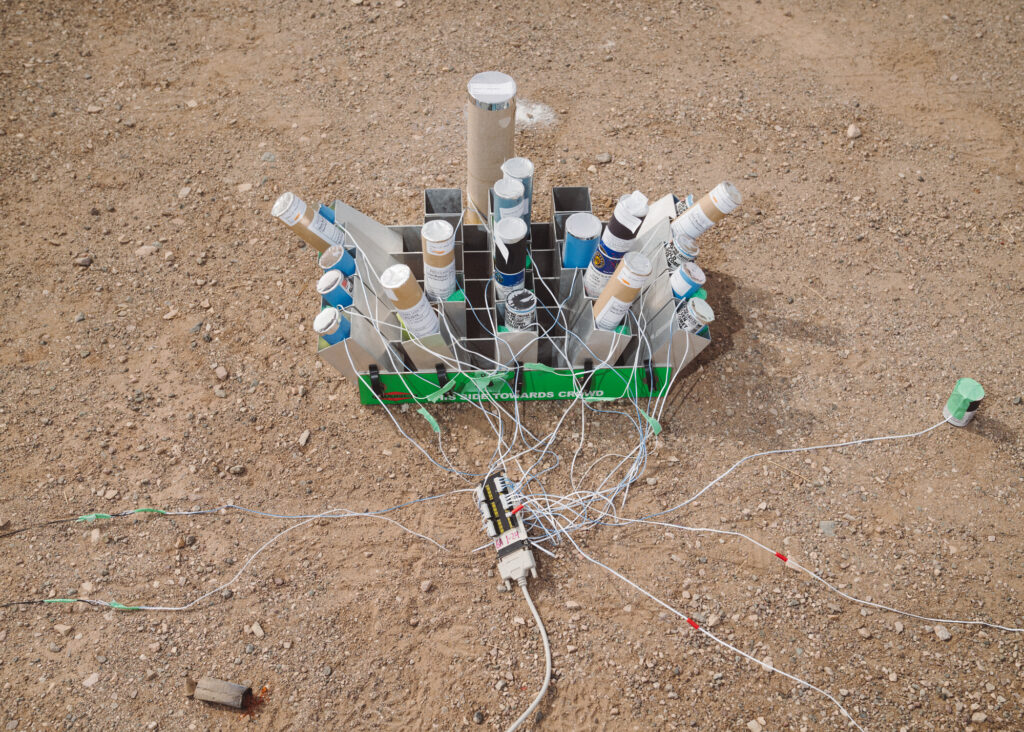
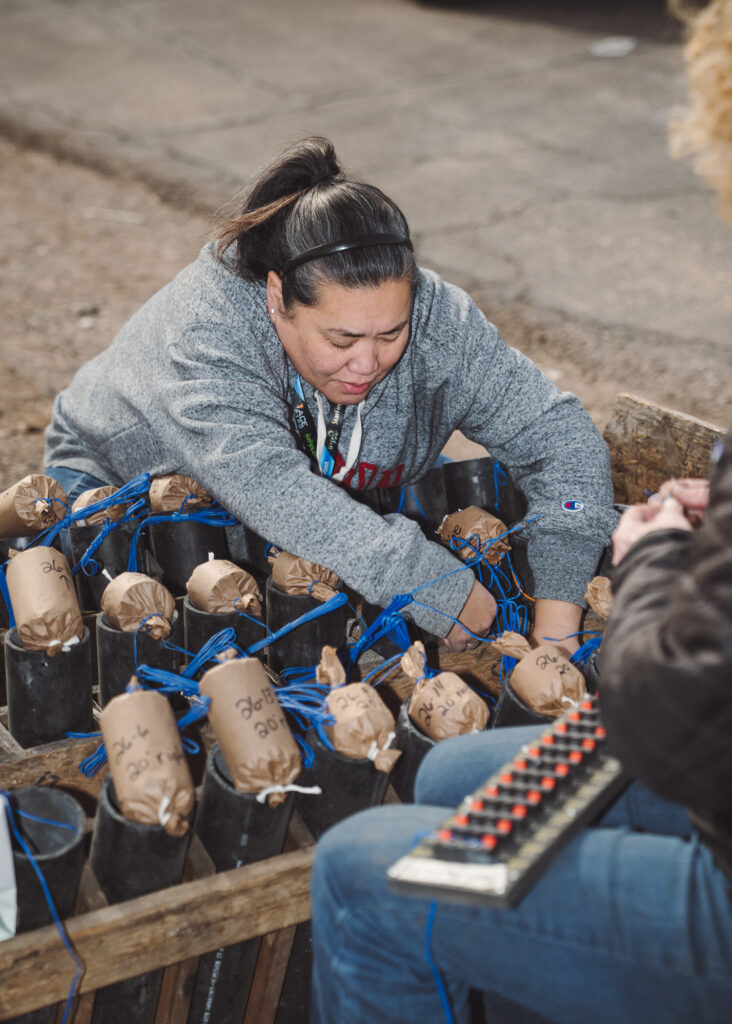
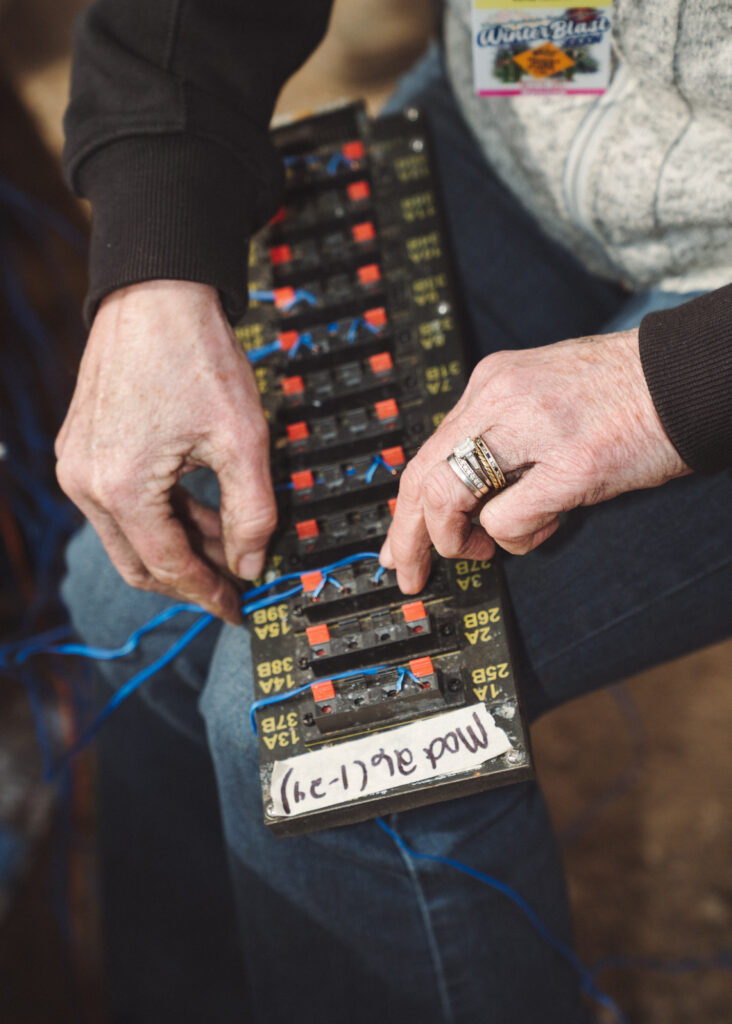
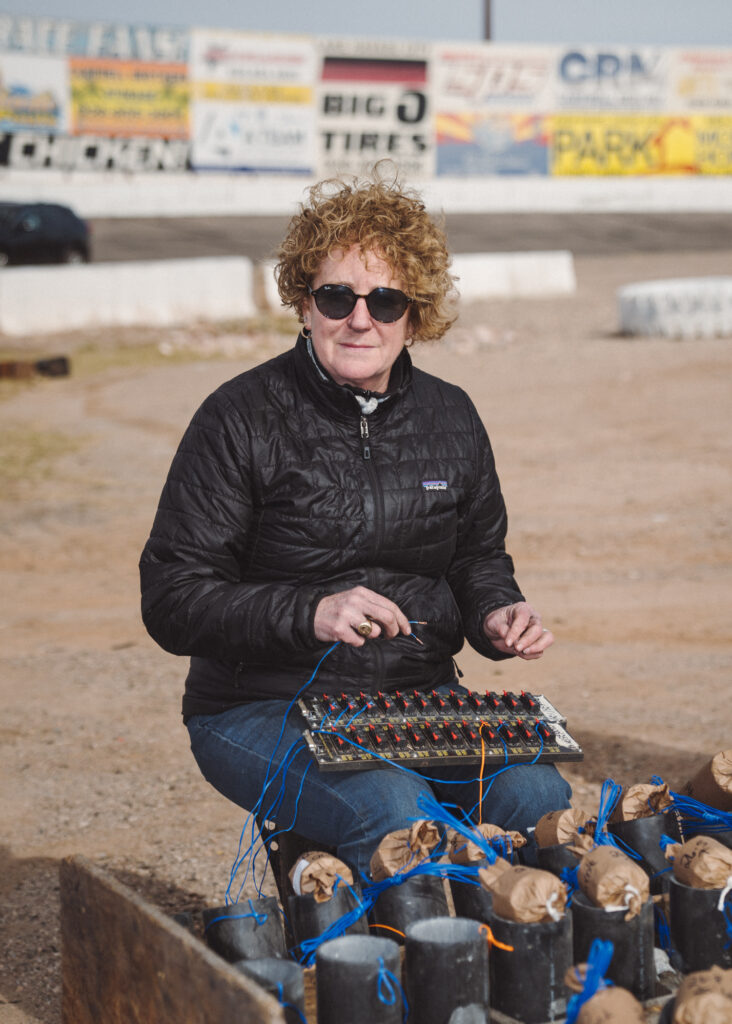
If you go around here you notice how old the people are, it’s an older generation. We’re desperate! If there’s any issue it’s that there’s not enough young people who are interested to labor like this to make something happen. It’s not a virtual reality!
Connie Whitman, member of the all-female Cherry Bomb Crew, Newtown, CT
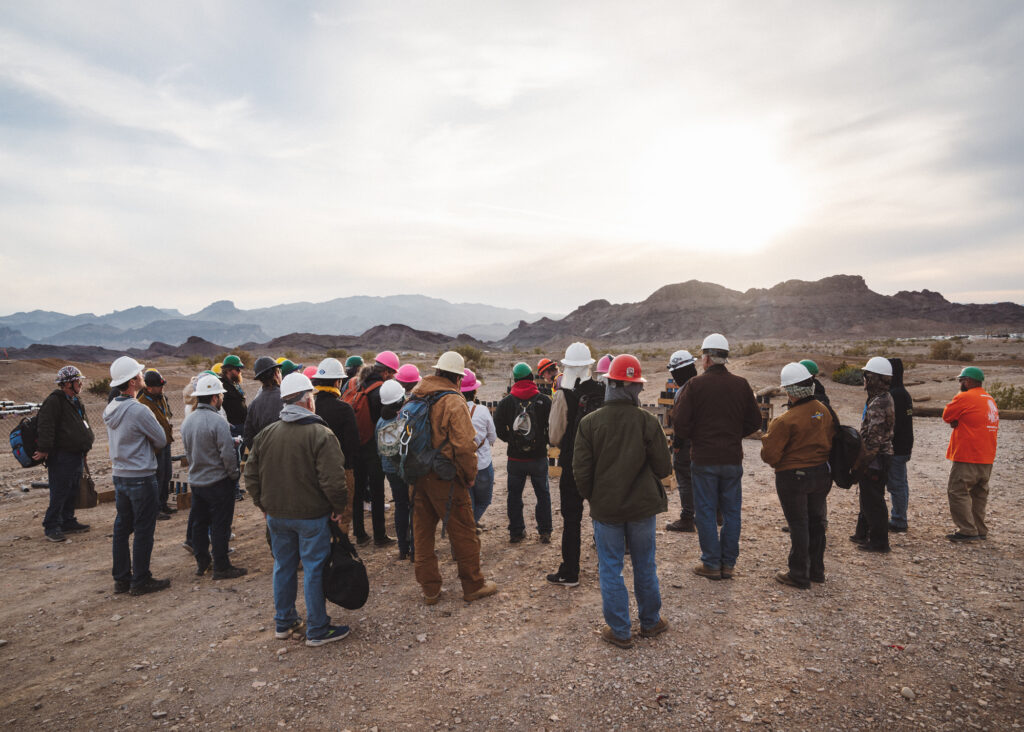
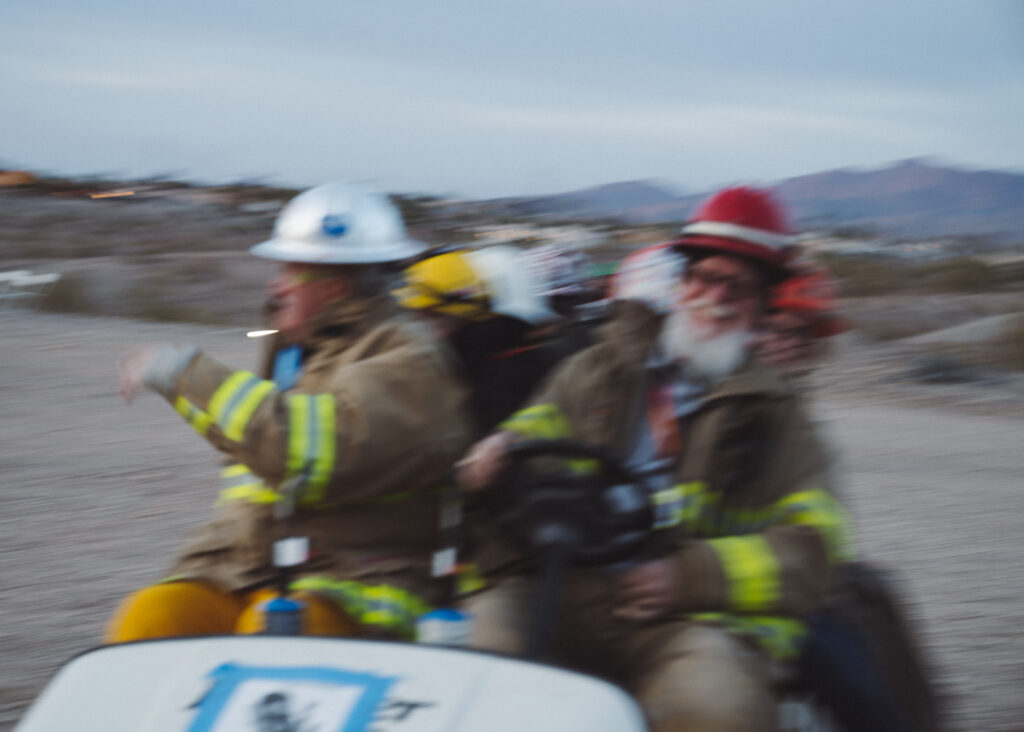
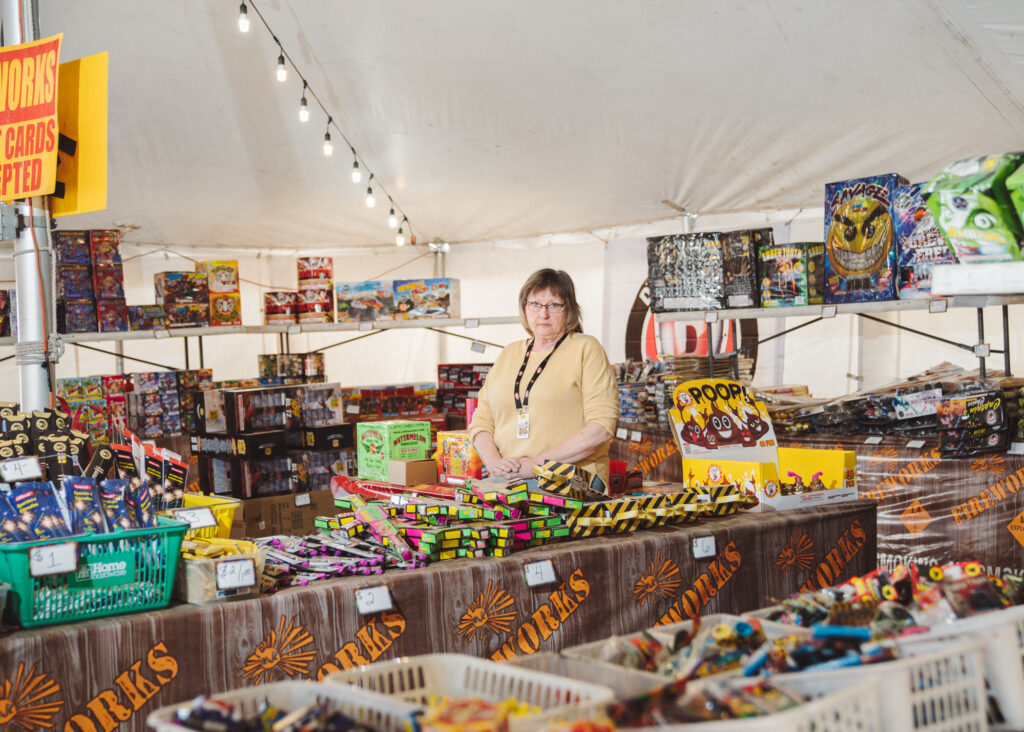
What do you want if you walk into a fireworks stand? Which fireworks catch your attention? Something with a catchy name and a fancy cover.
Susan Byington, employee for Acme Discount Fireworks, Preston, ID
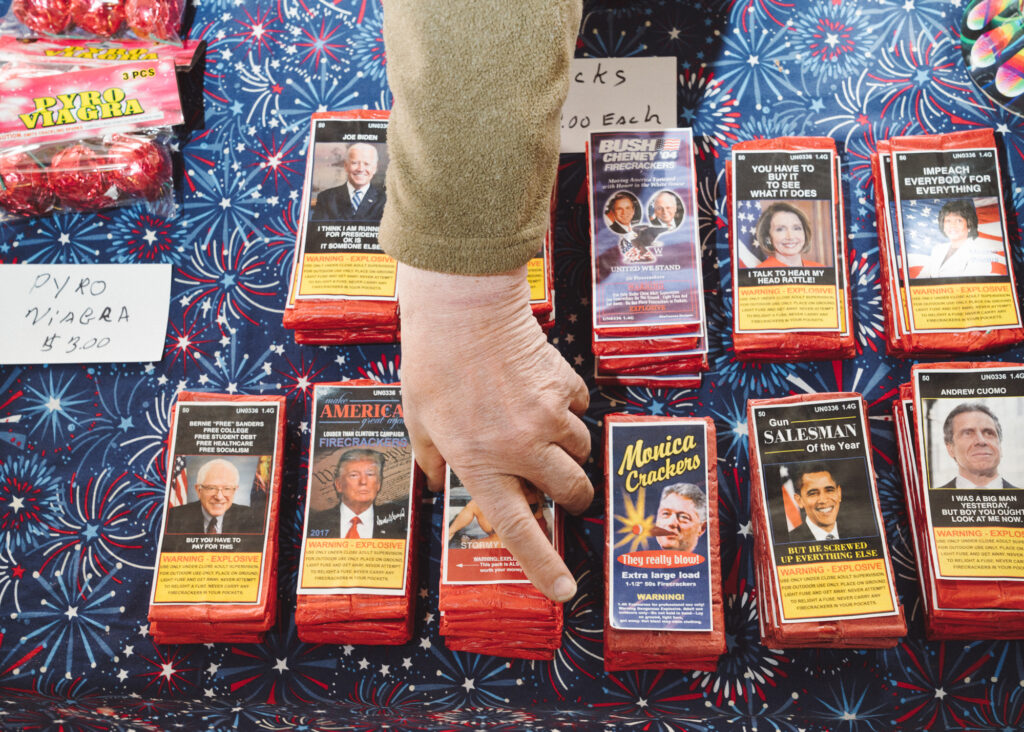
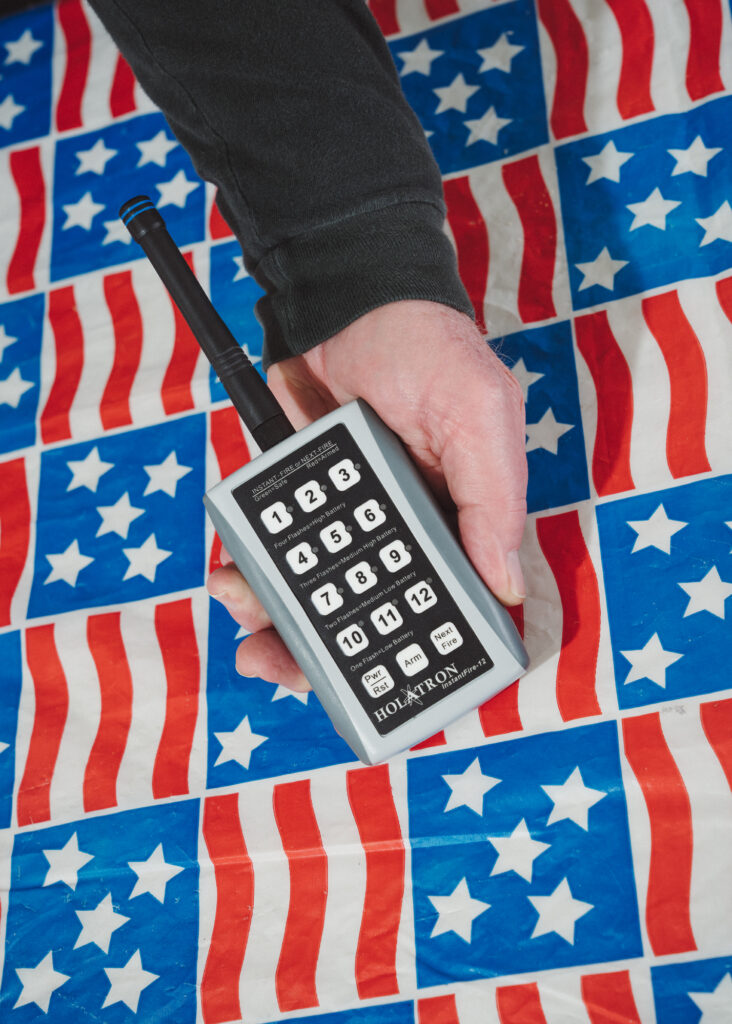
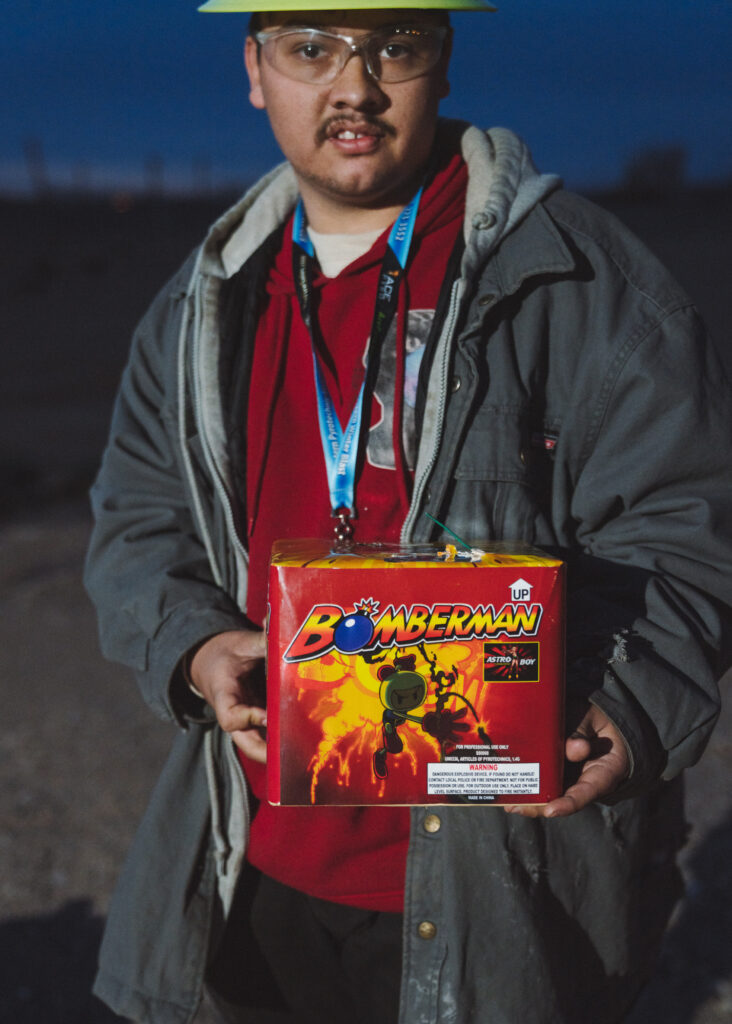
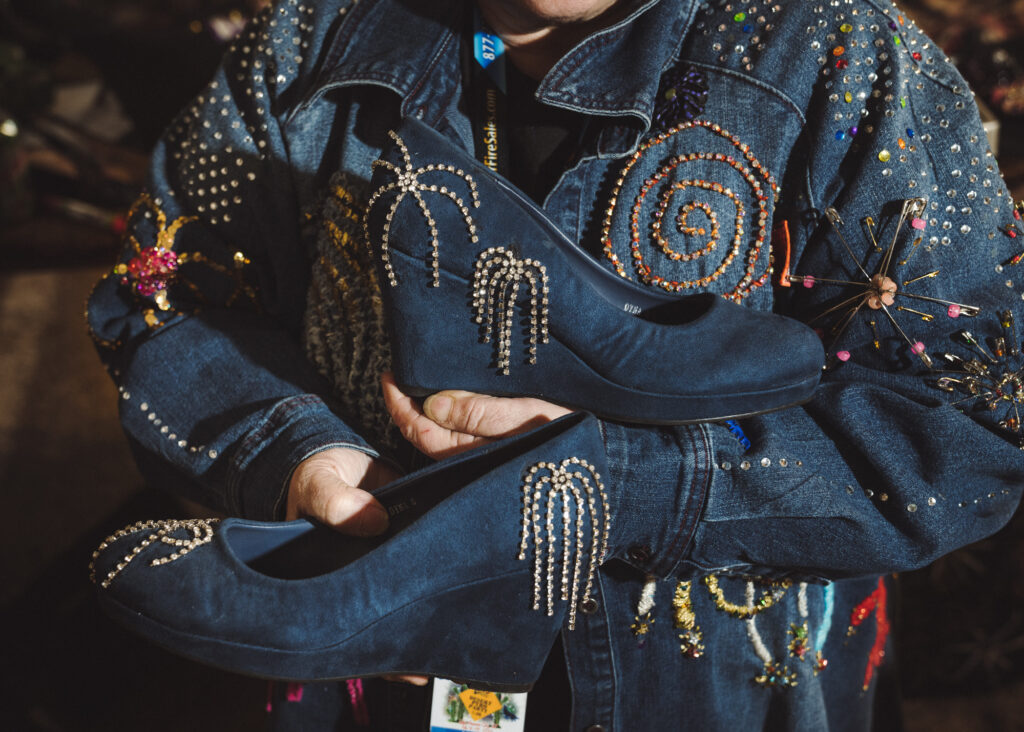
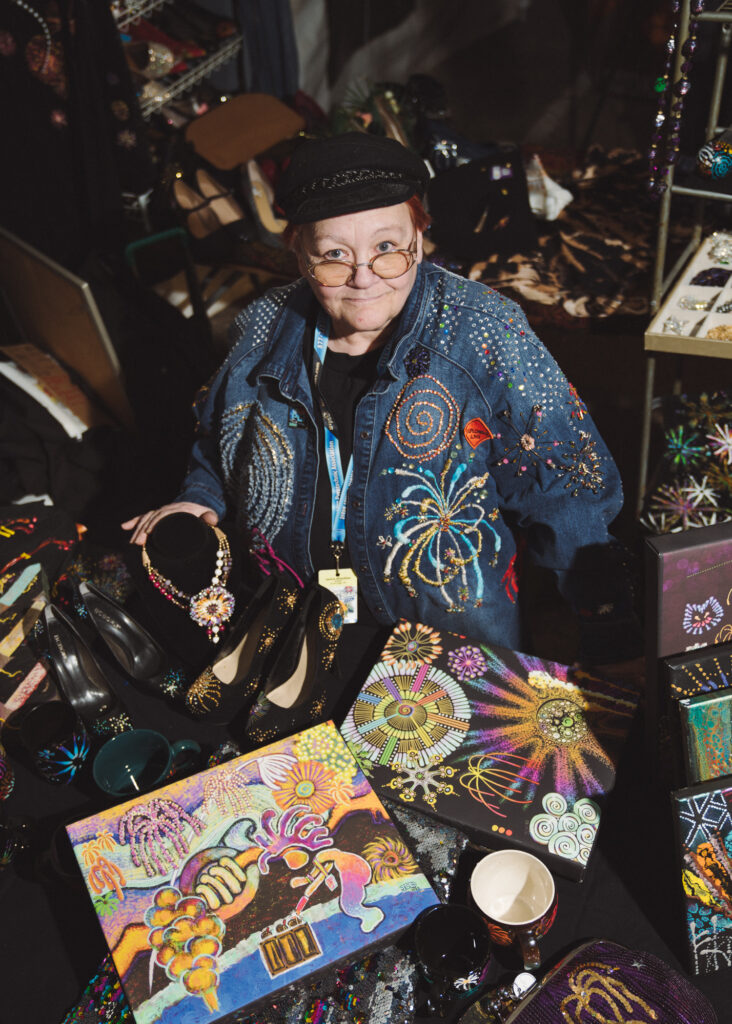
Do you know the difference between a glitter queen and a thump junky? Glitter queens and thump junkies are the two types of pyrotechnicians. Thump junkies are guys who like to make noise. I do it for art.
Jackie Whedbee, creates fireworks art and fashion garments, Anchorage, AK
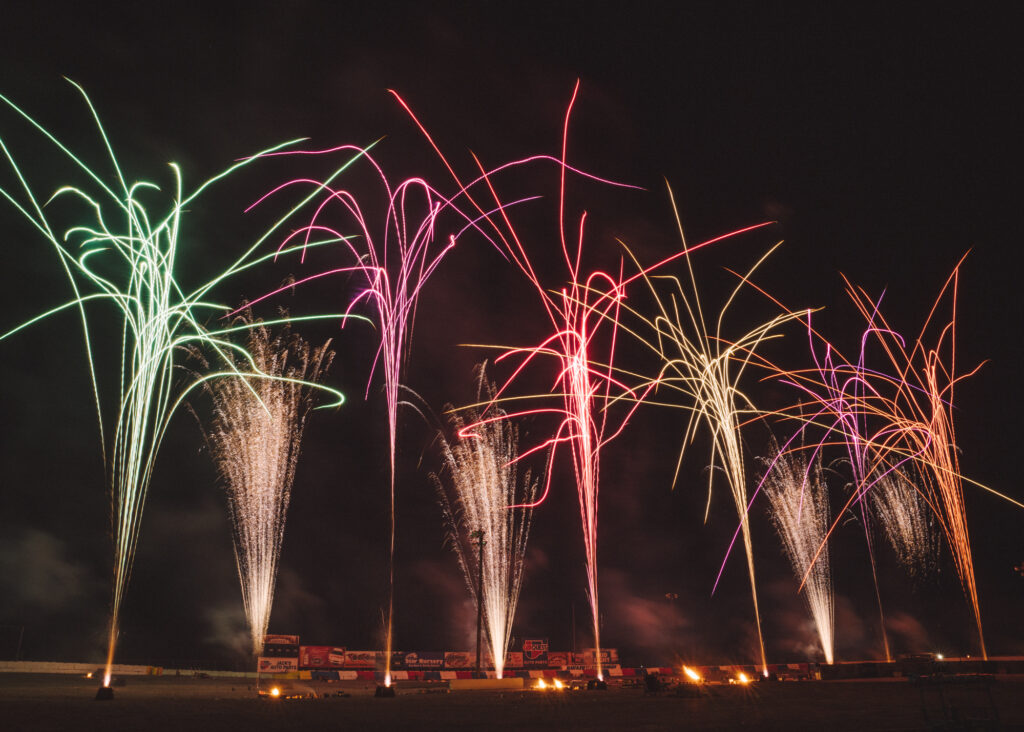
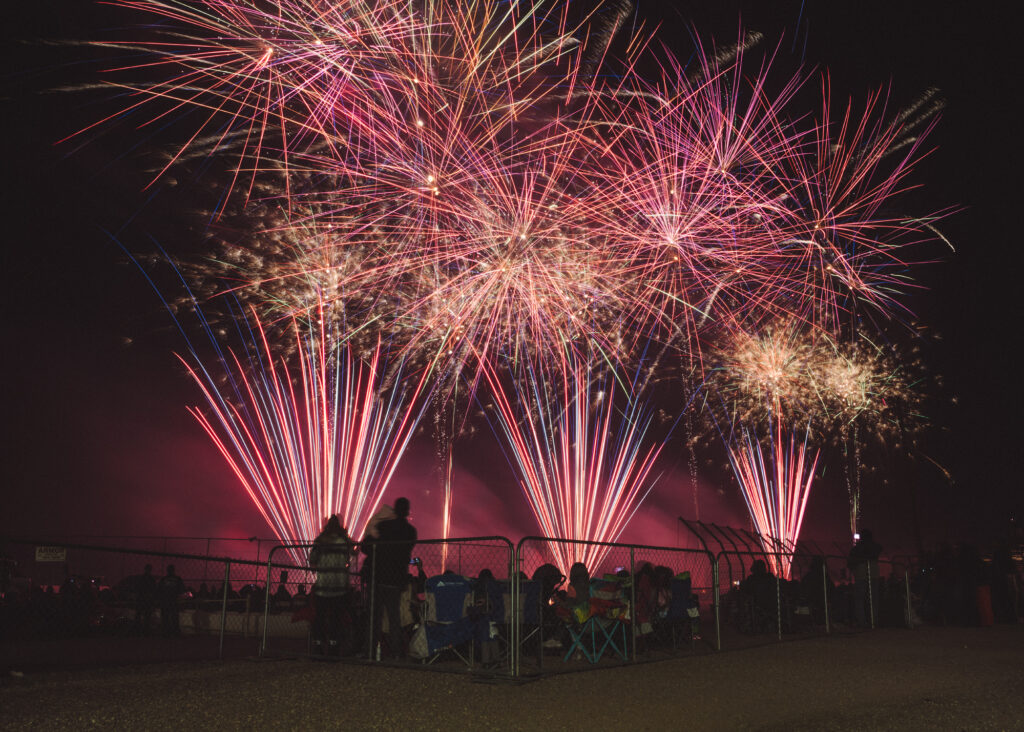
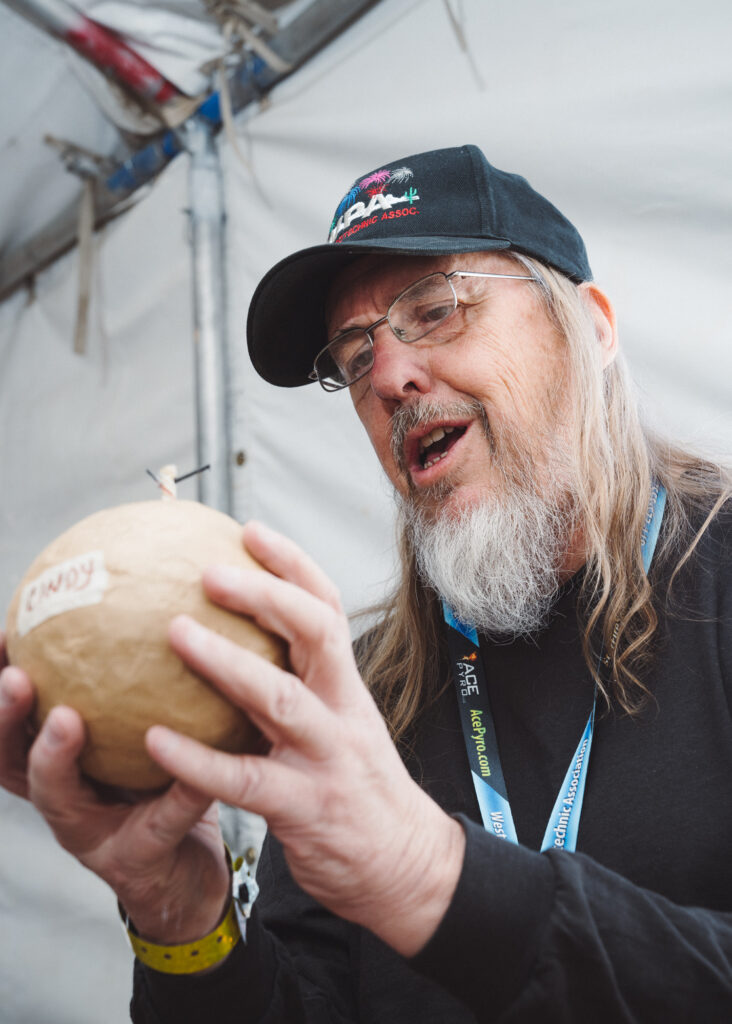
These will go about 300 feet to 500 feet, then during that time there’s a fuse in here that takes about 3 seconds to burn. The firing of the charge lights the bottom of the fuse, so as it comes out of the gun that fuse is burning all the way up. Three seconds later it gets to the center of the shell and then boom, it throws all the stars out into the sky and produces those nice oohs and aahs.
Andy Campbell, shell-building instructor, Seattle
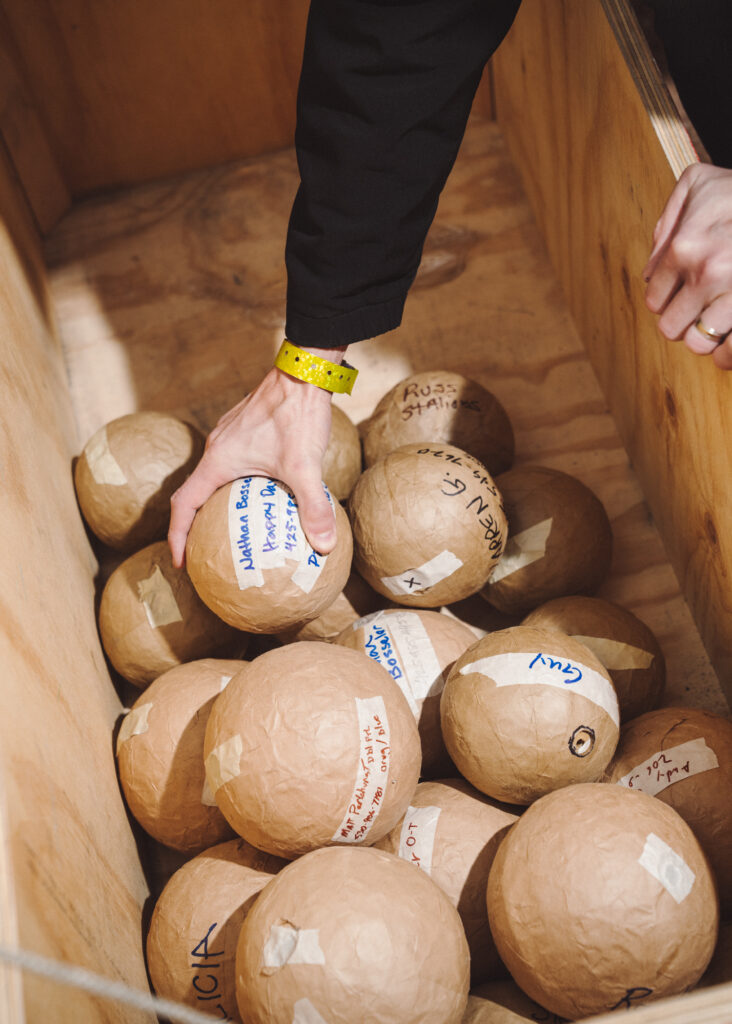
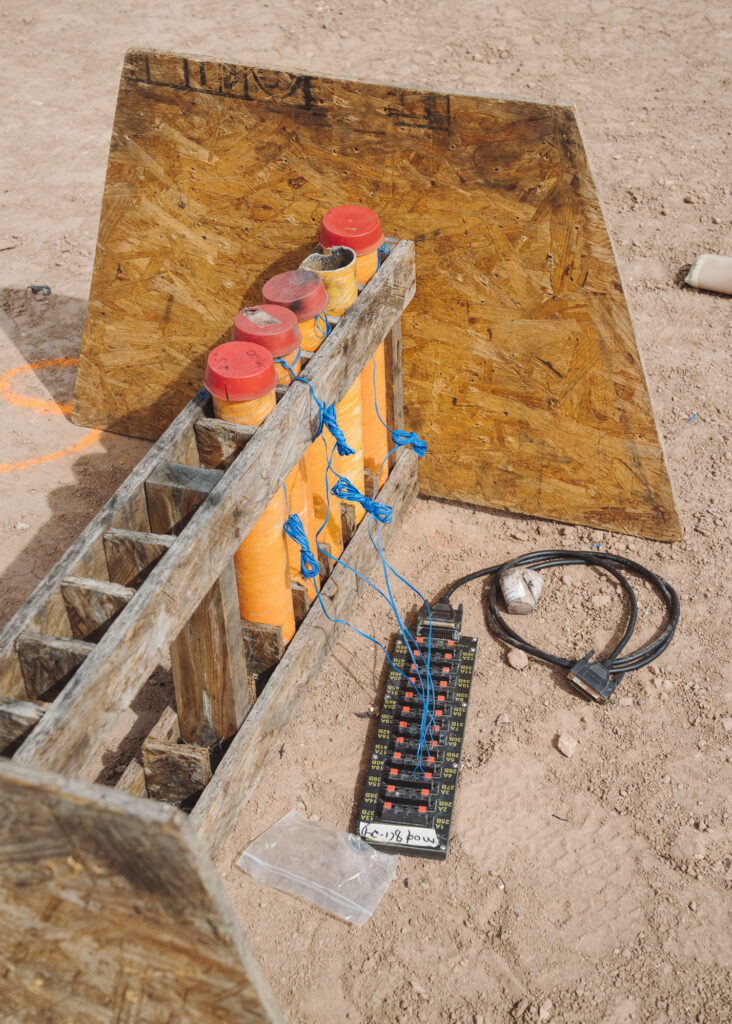
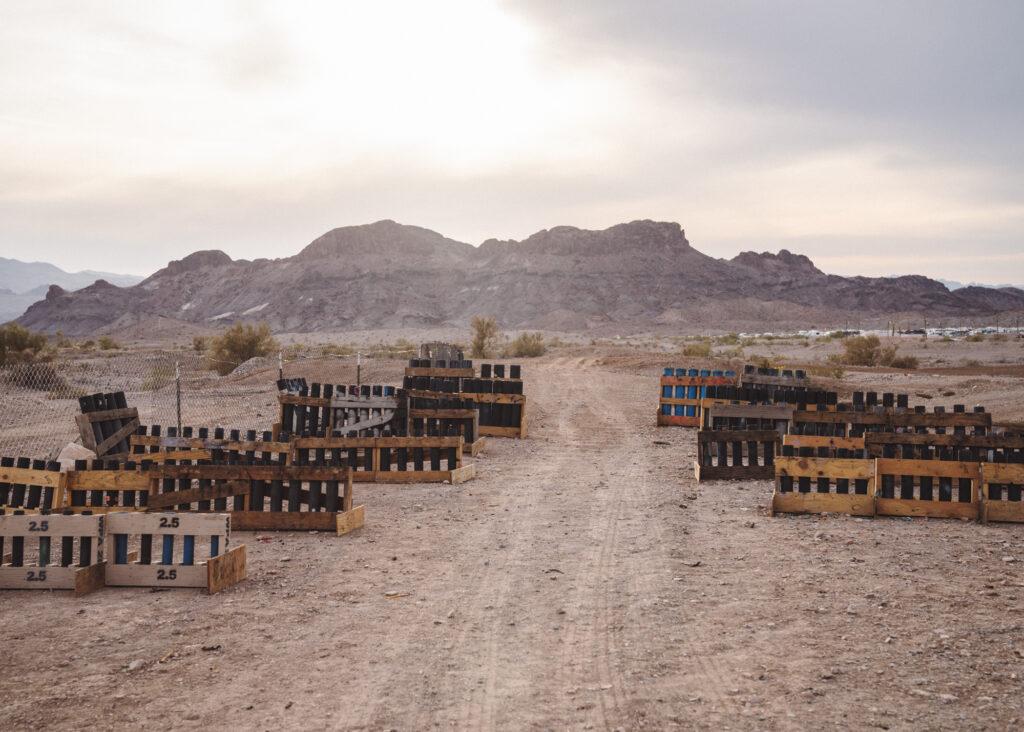
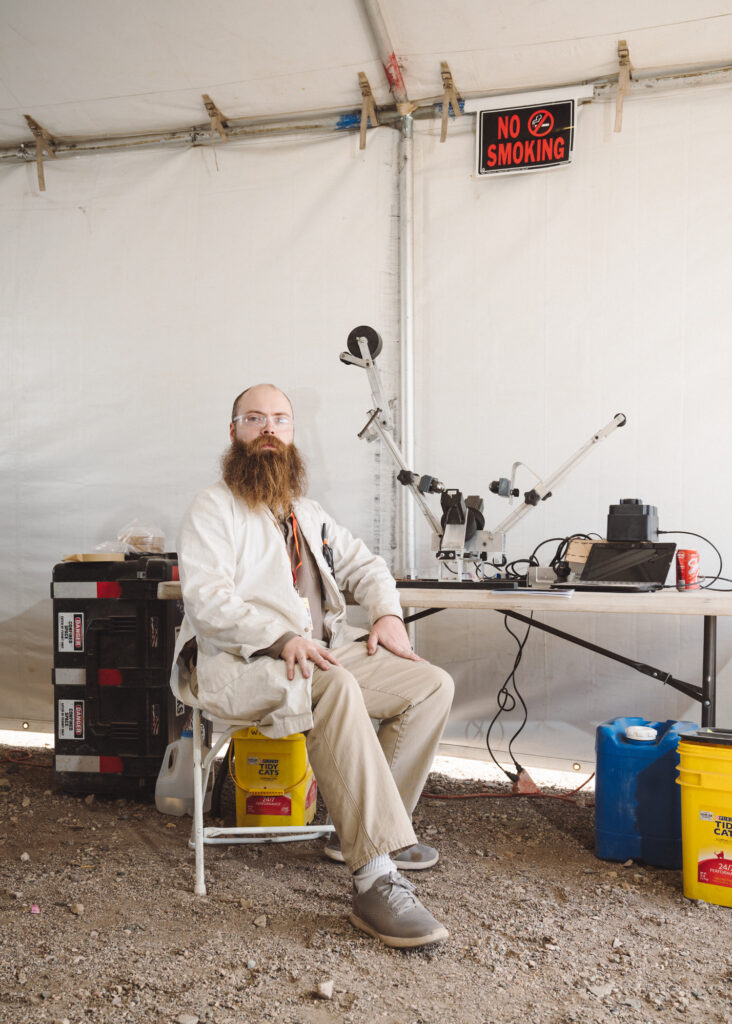
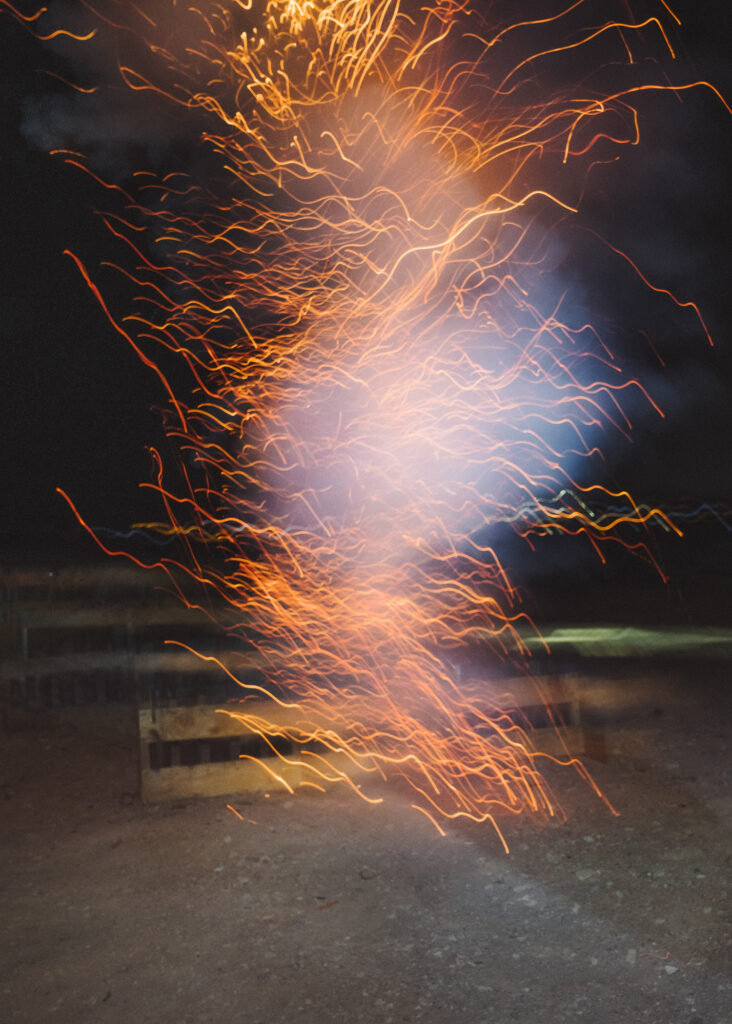
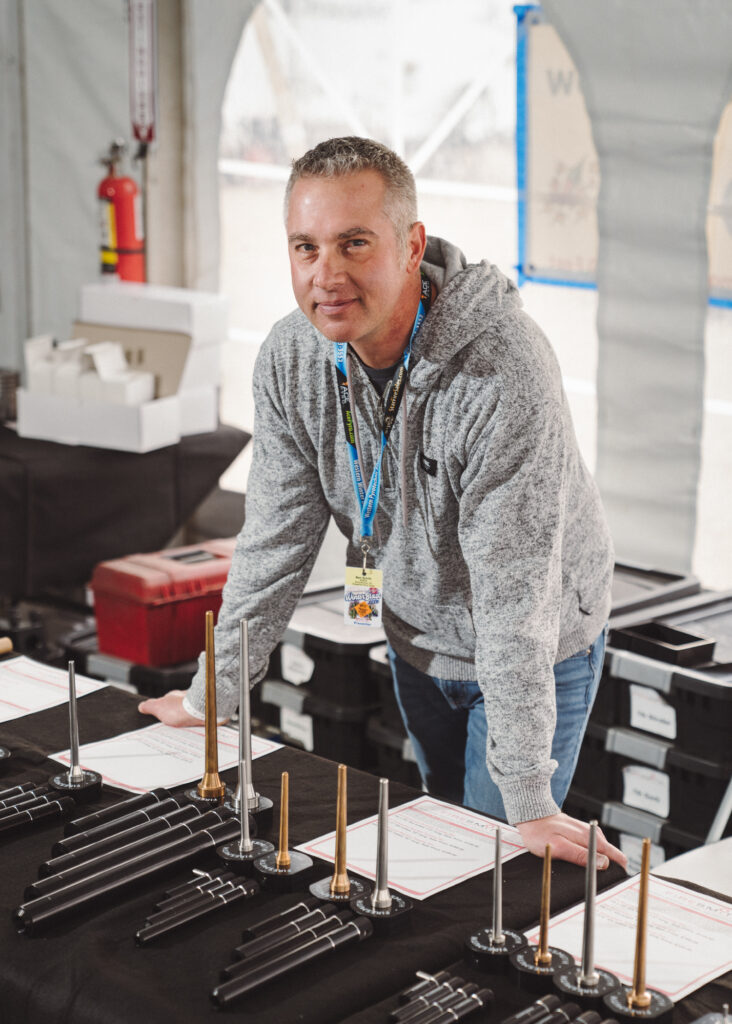
Anybody can make something go boom, it doesn’t really take a whole heck of a lot of work or a lot of skill; it takes more of a willingness to just kind of skirt the legal system. Whereas building fireworks that go up into the sky and burst in several different colors and shriek and whistle and pop, or rockets that change colors and can lift heavy payloads up into the sky—it takes a lot of skill.
Ben Smith, owner of Fire Smith Manufacturing, Breckenridge, CO
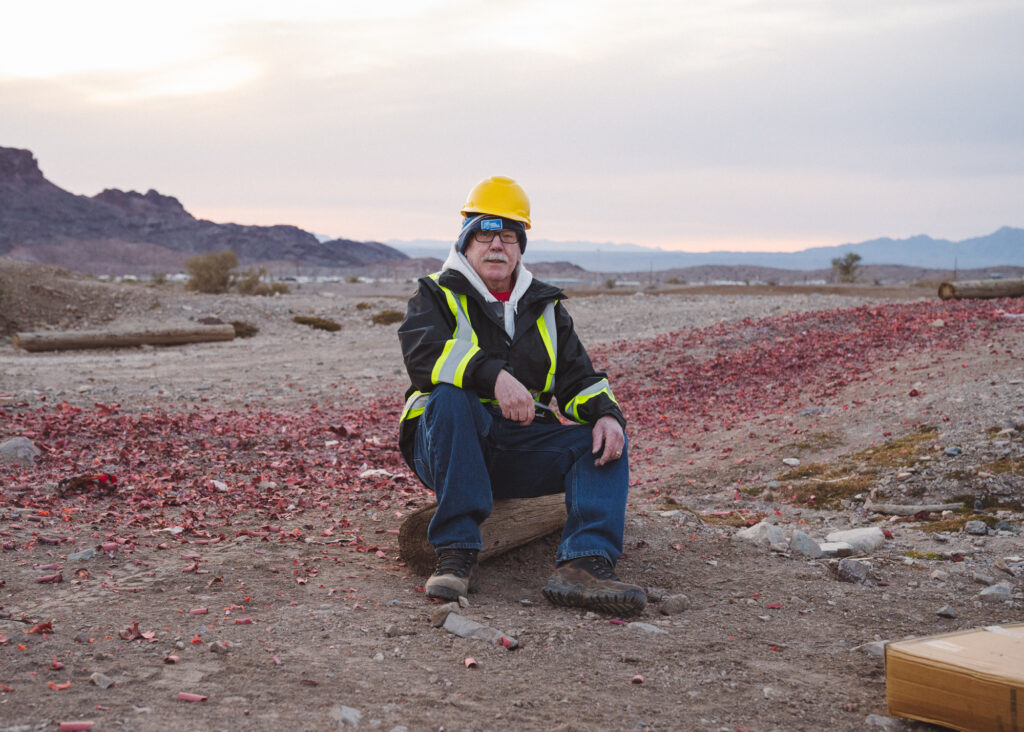
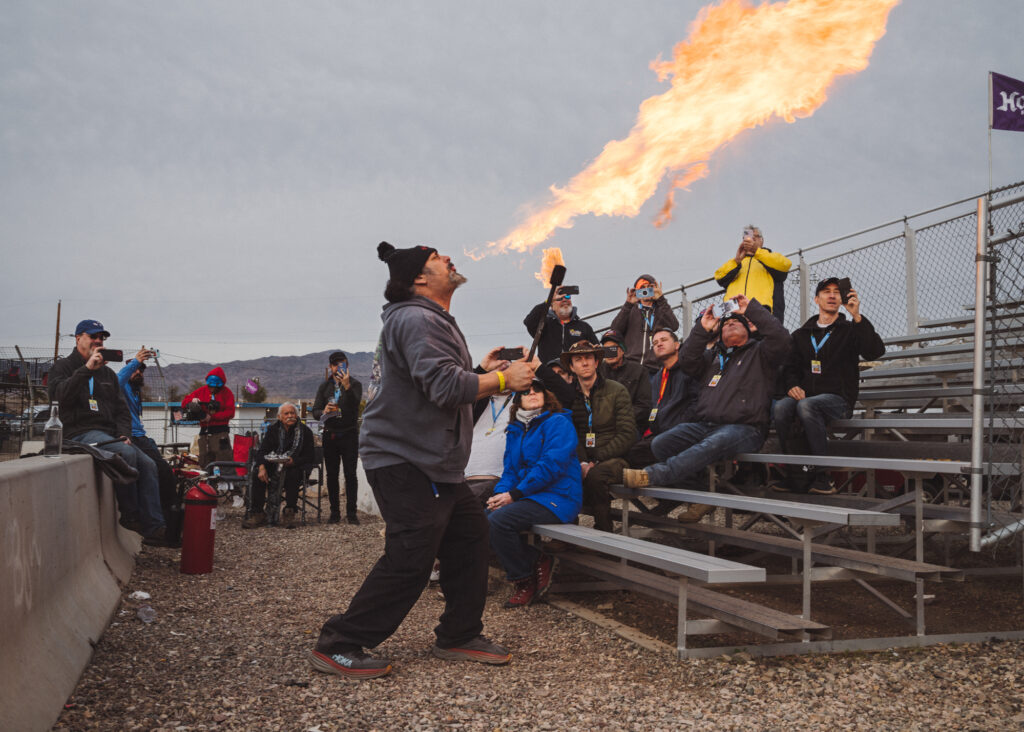
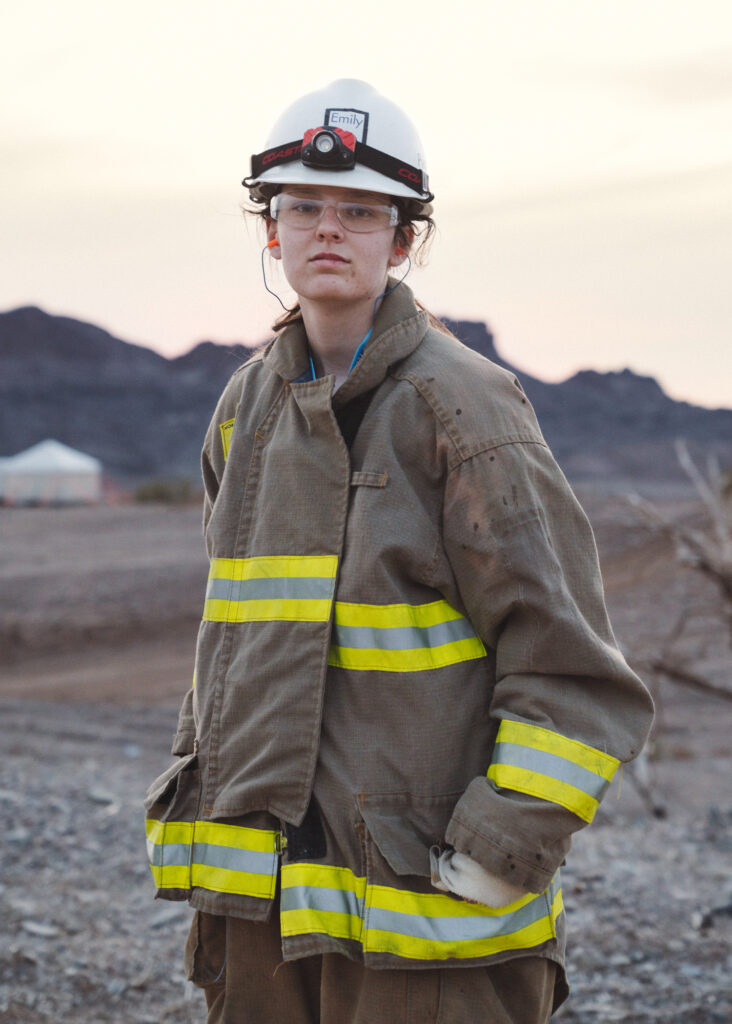
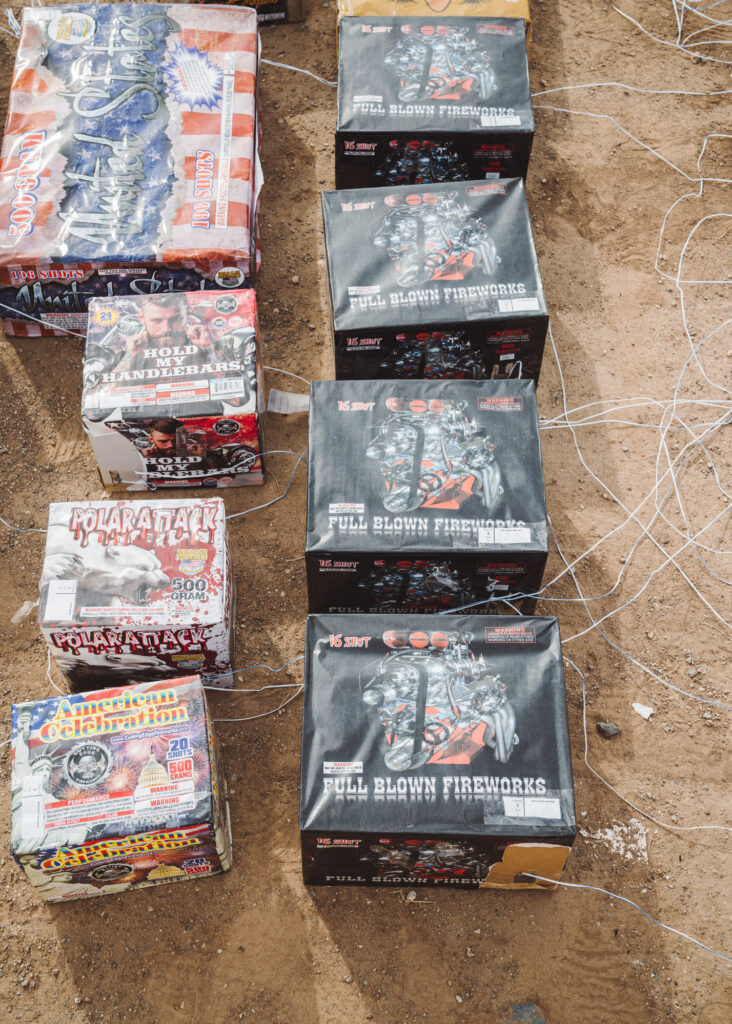
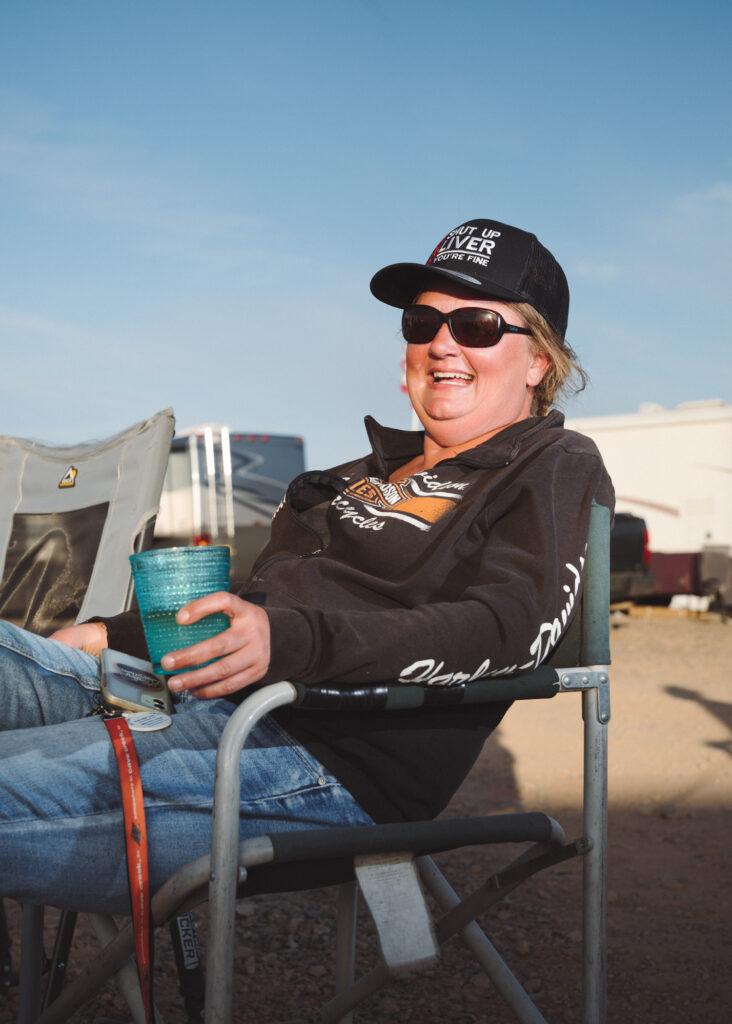
The culture of fireworks in Canada versus the U.S. is not different at all. You get drunk and you watch fireworks! The best part was the flames of fire, the fireballs.
Shannon, RV camper partying with friends, Castlegar, BC, Canada
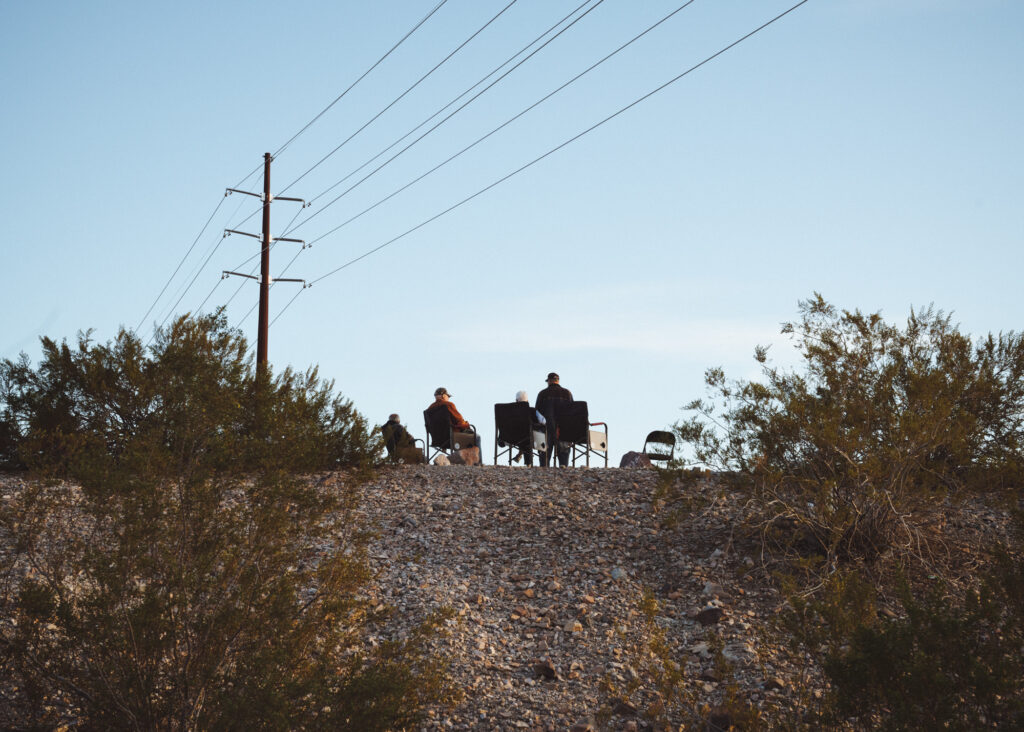
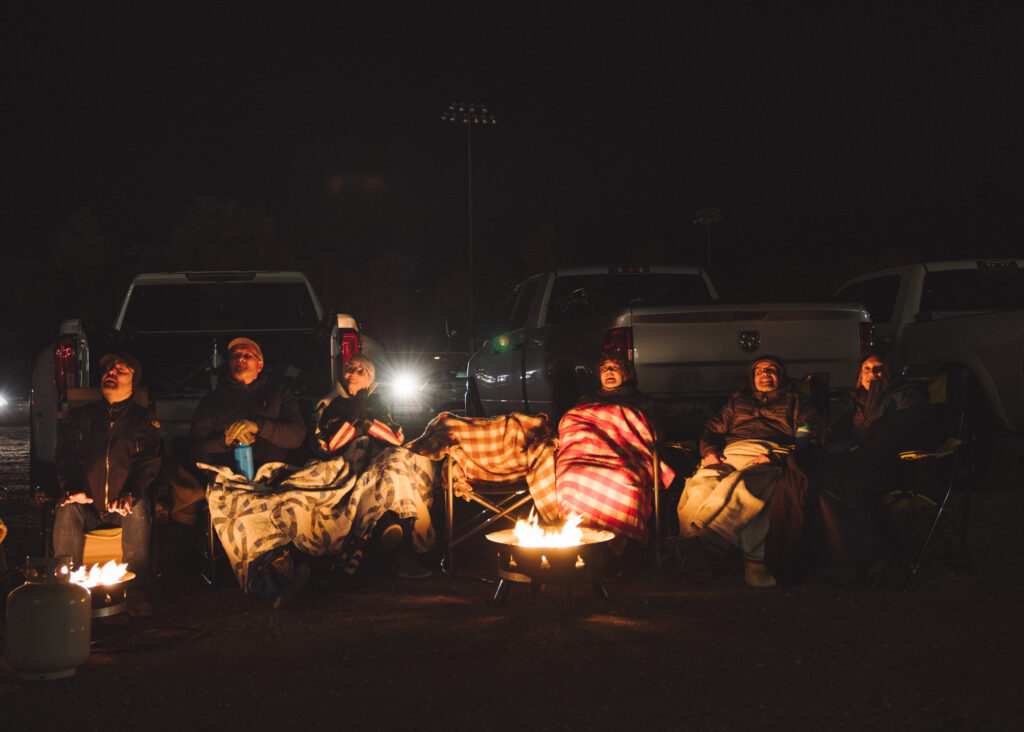
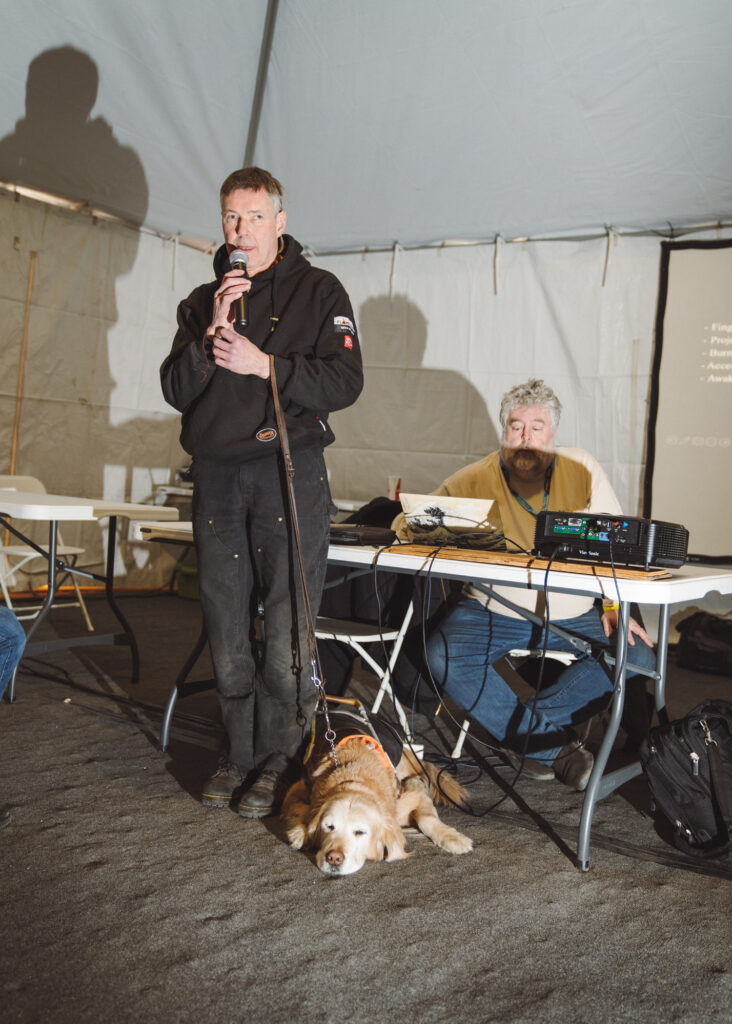
It’s not just about me, it’s about the collective energy of that moment and the audience. I think it’s this kind of transpersonal energy field that gets created.
Collin van Uchelen, Vancouver
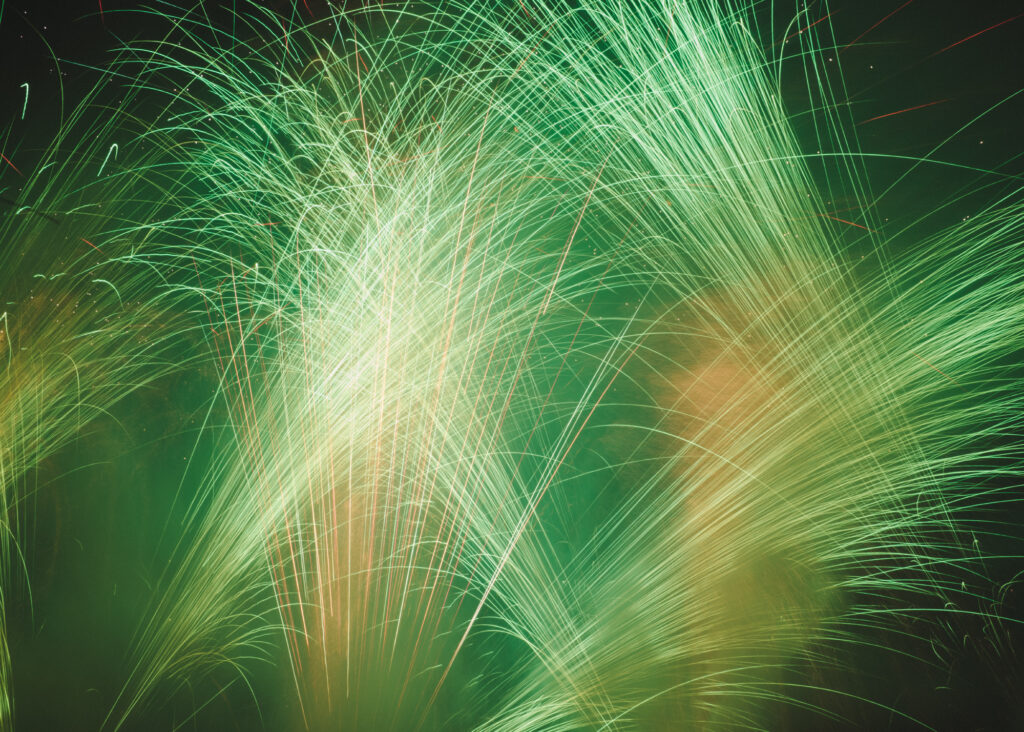
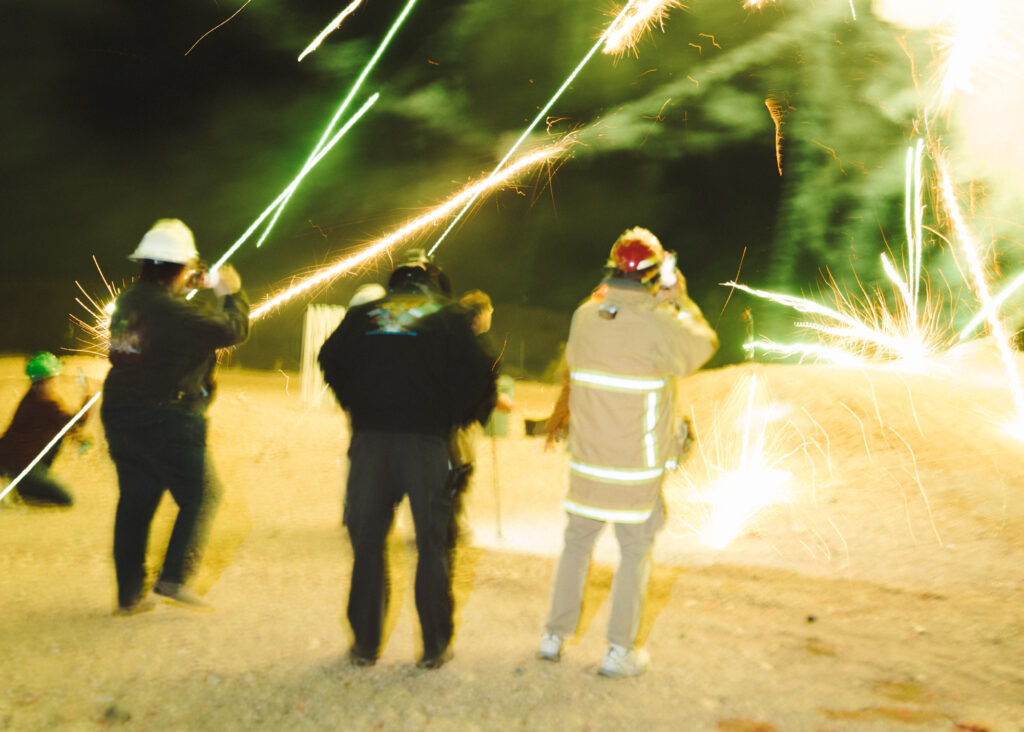
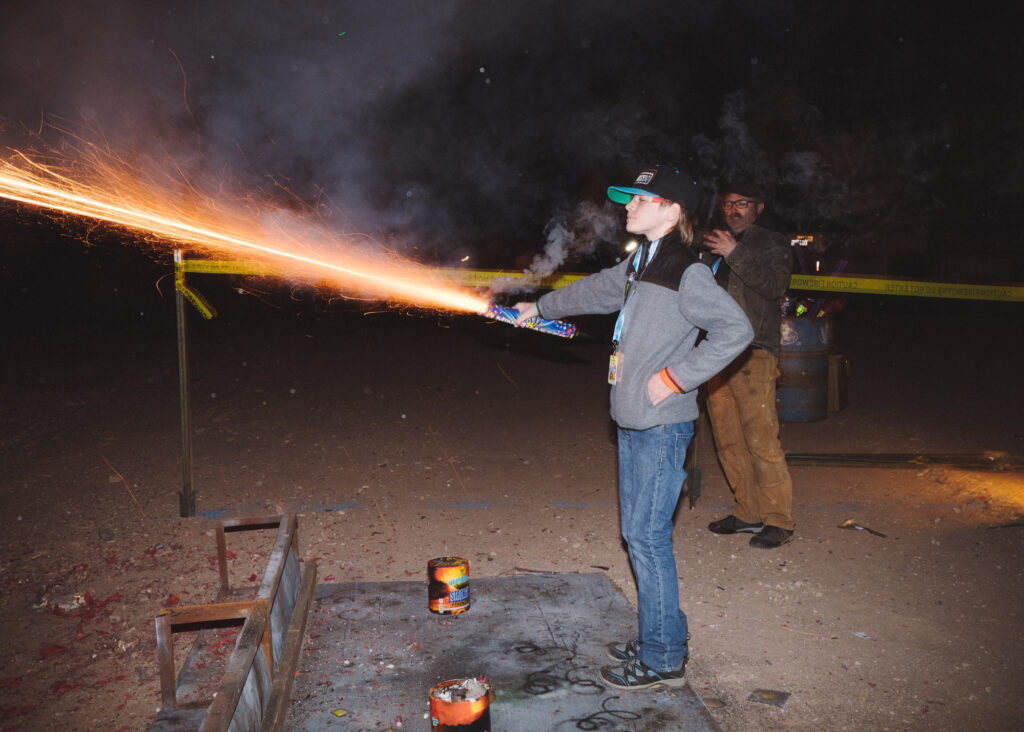
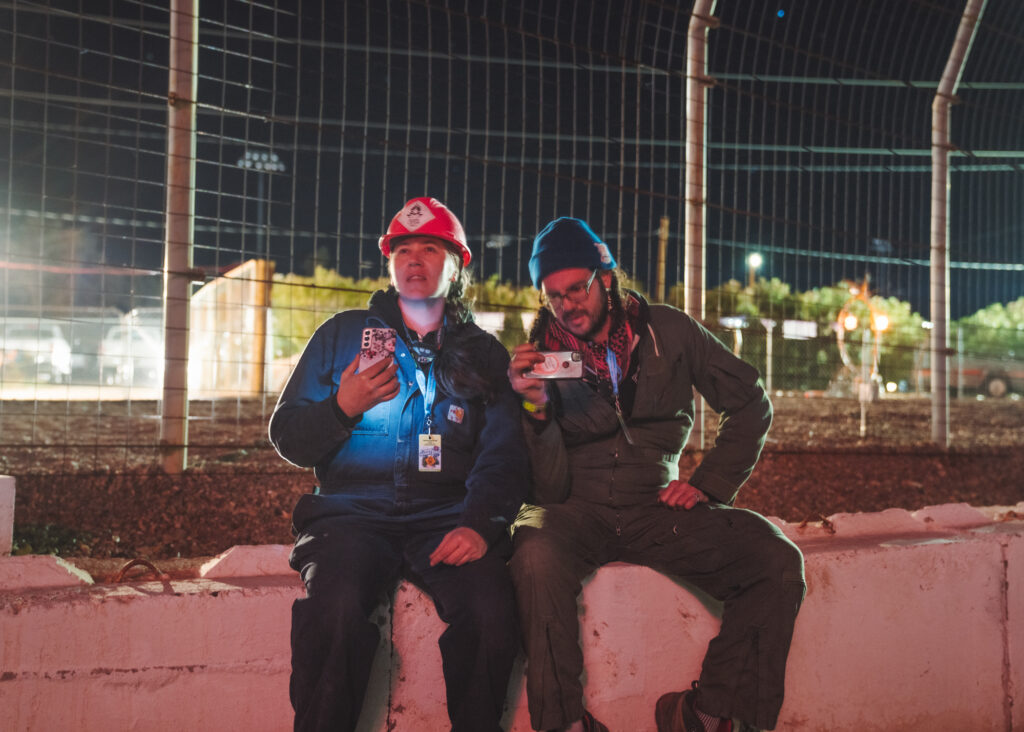
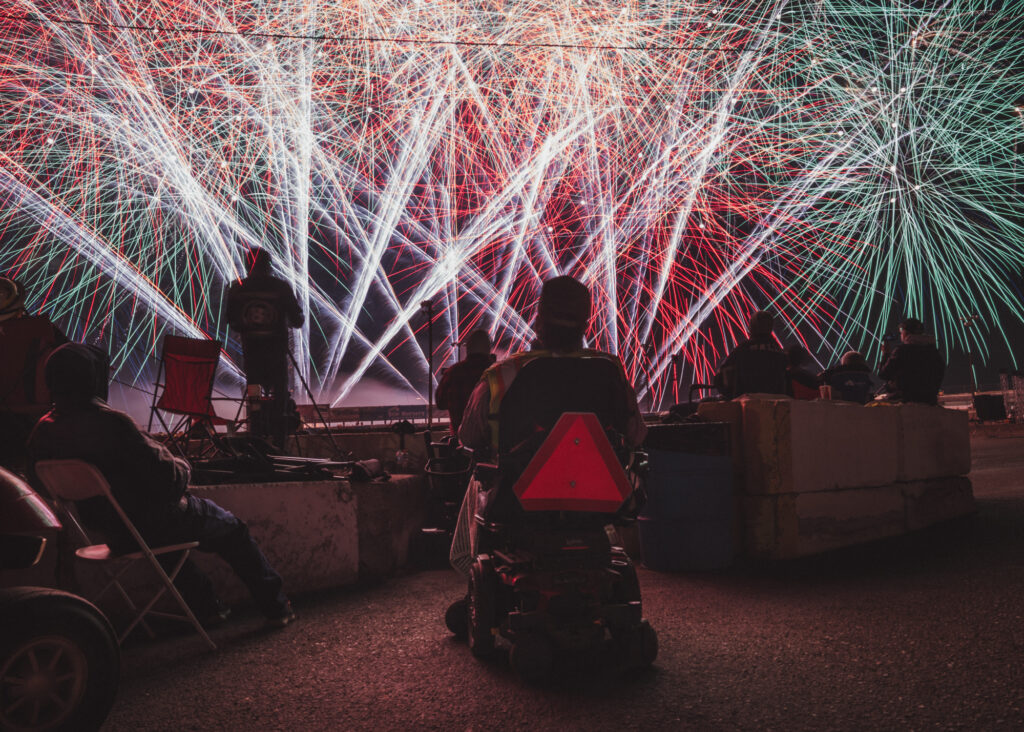
Where’s pyro gonna go? A lot of people say that drones and drone shows are going to take over. On television you’ve got computer-generated fires and all that sort. And there’s also computer-generated fireworks. Hopefully it never totally fizzles out.
Darrell Fiss, WPA safety instructor, Coronation, AB, Canada
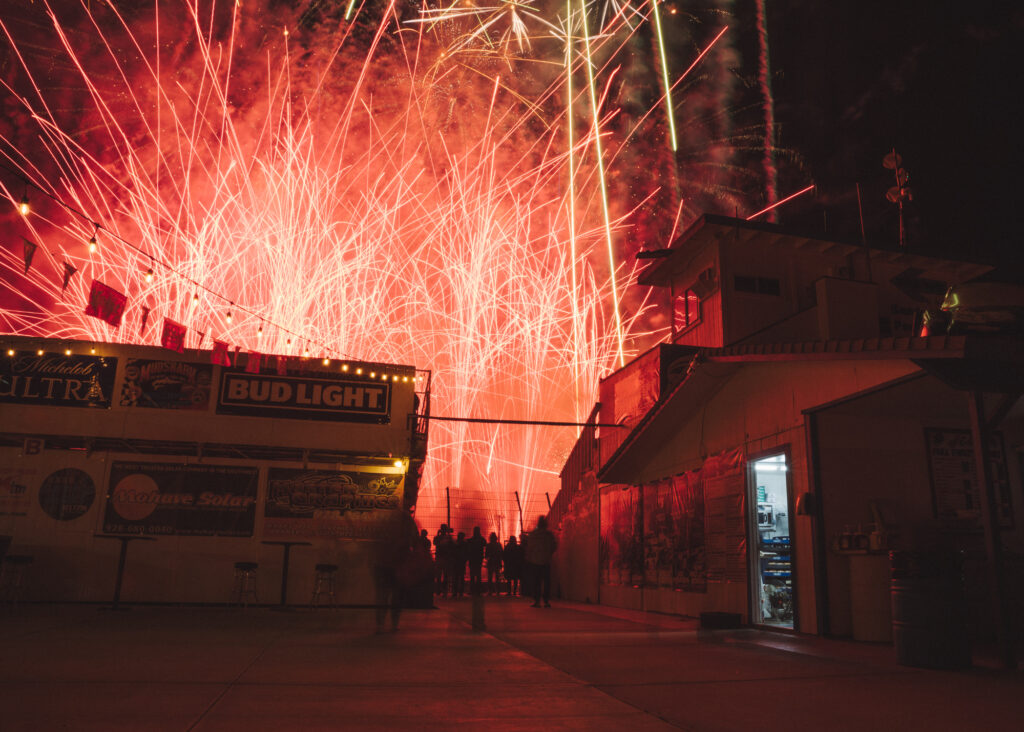
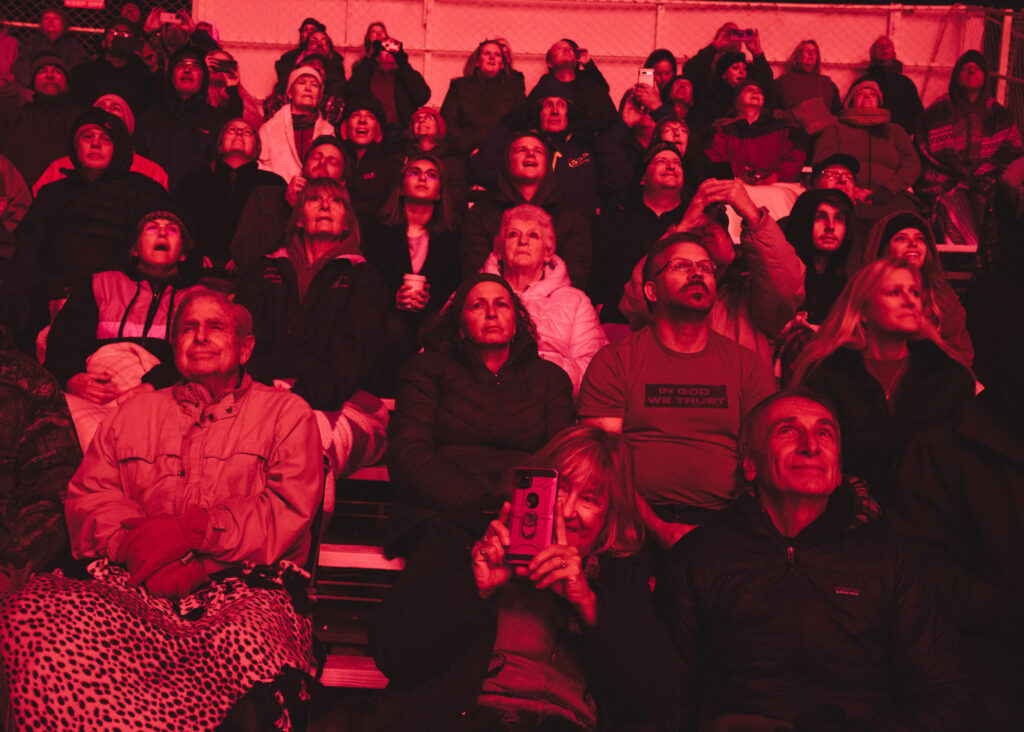
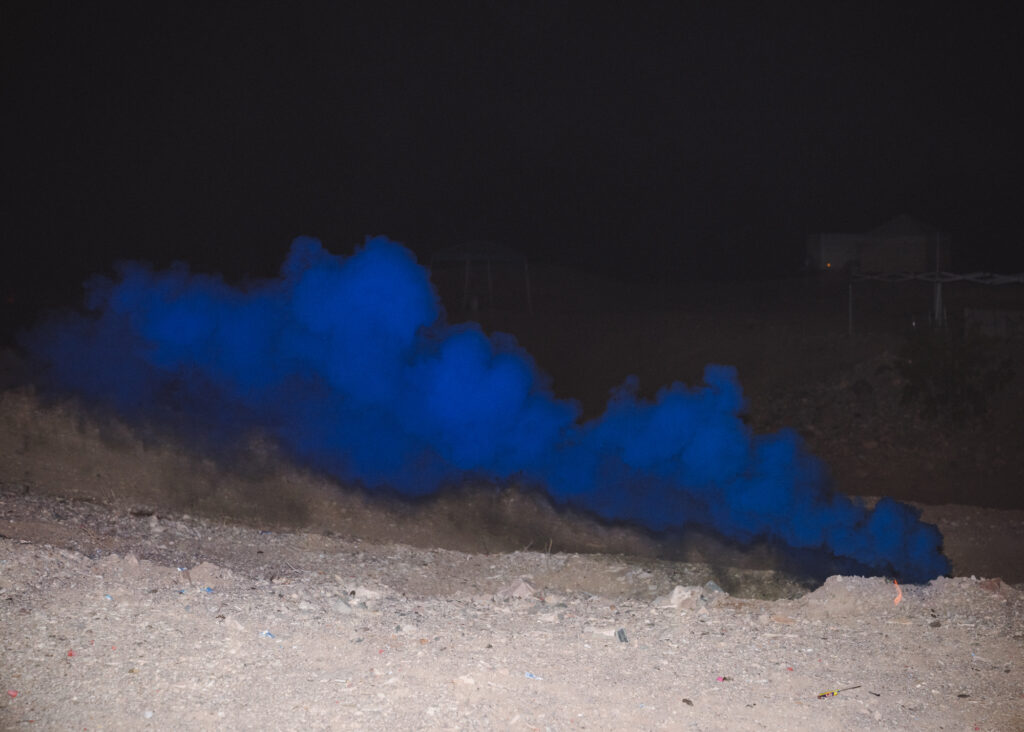
Photos and reporting by Brandon Tauszik; text by Rebecca McCarthy.

